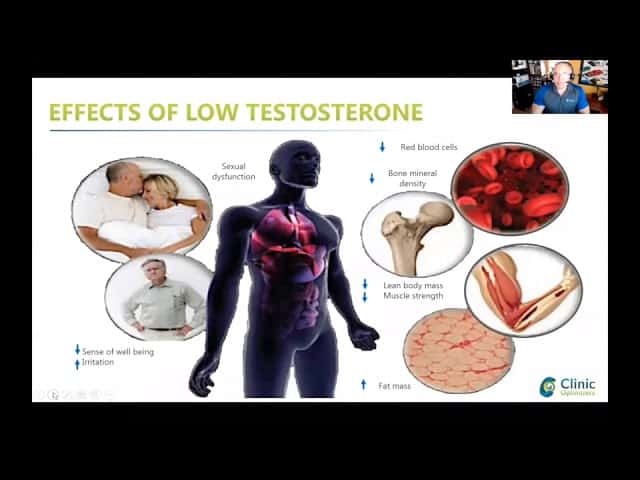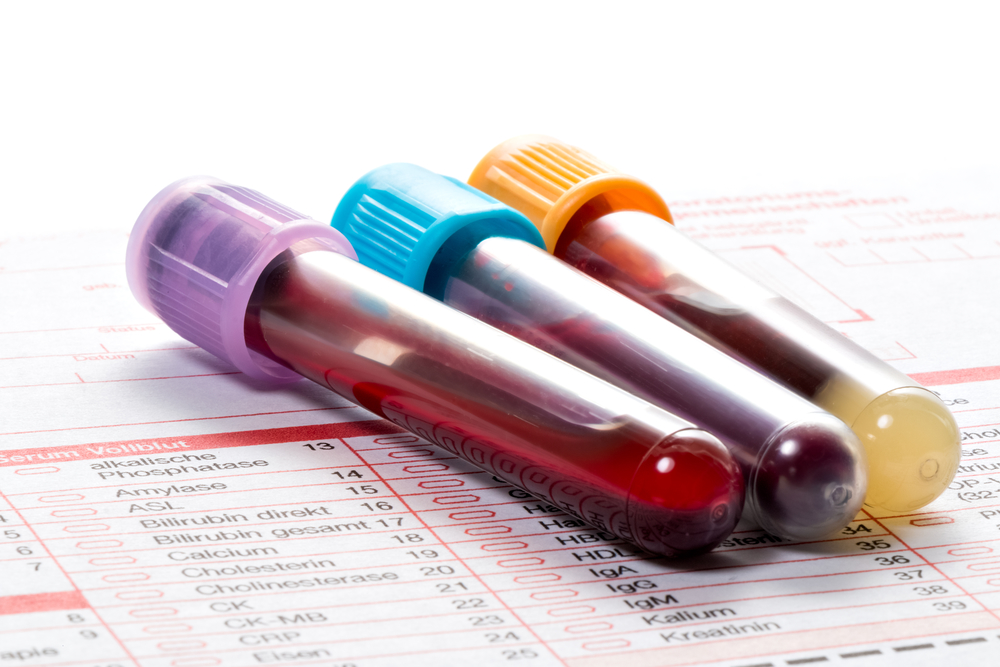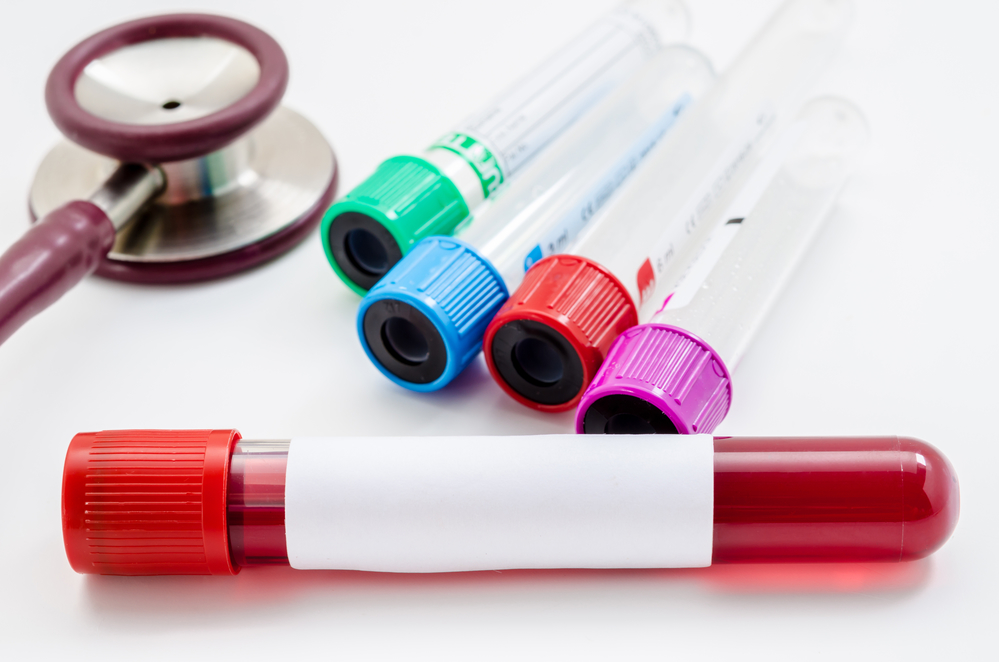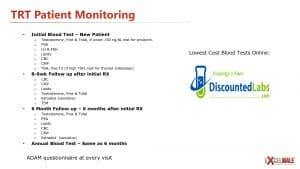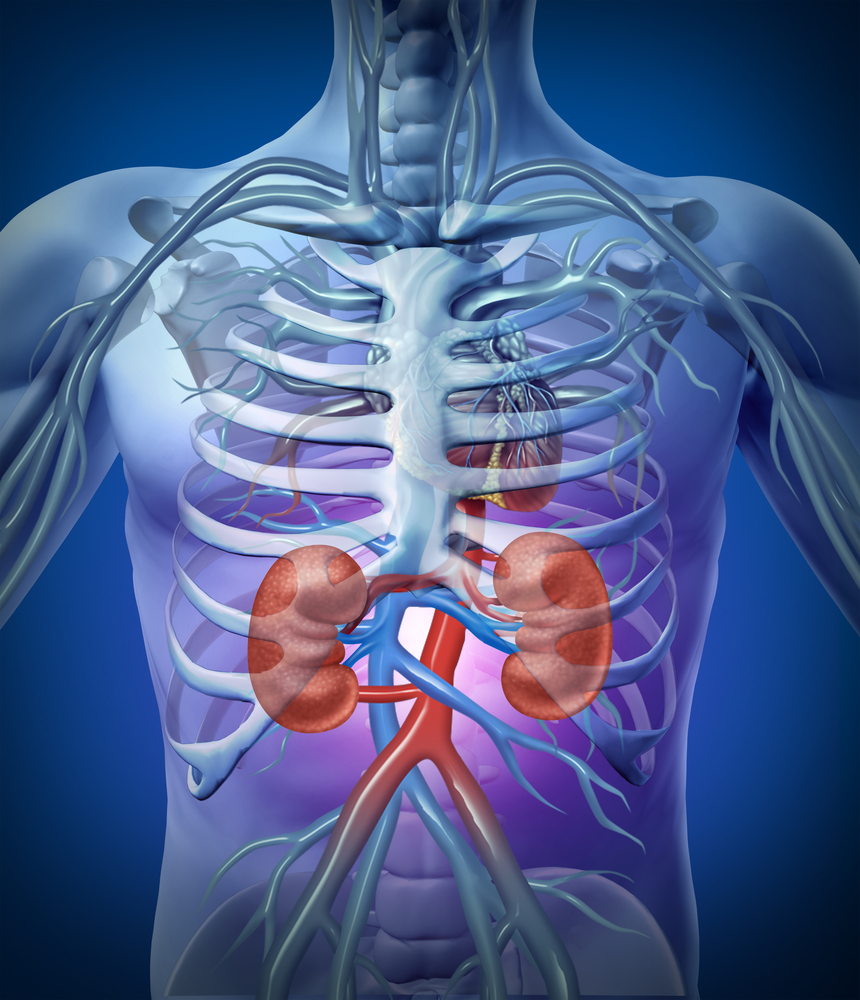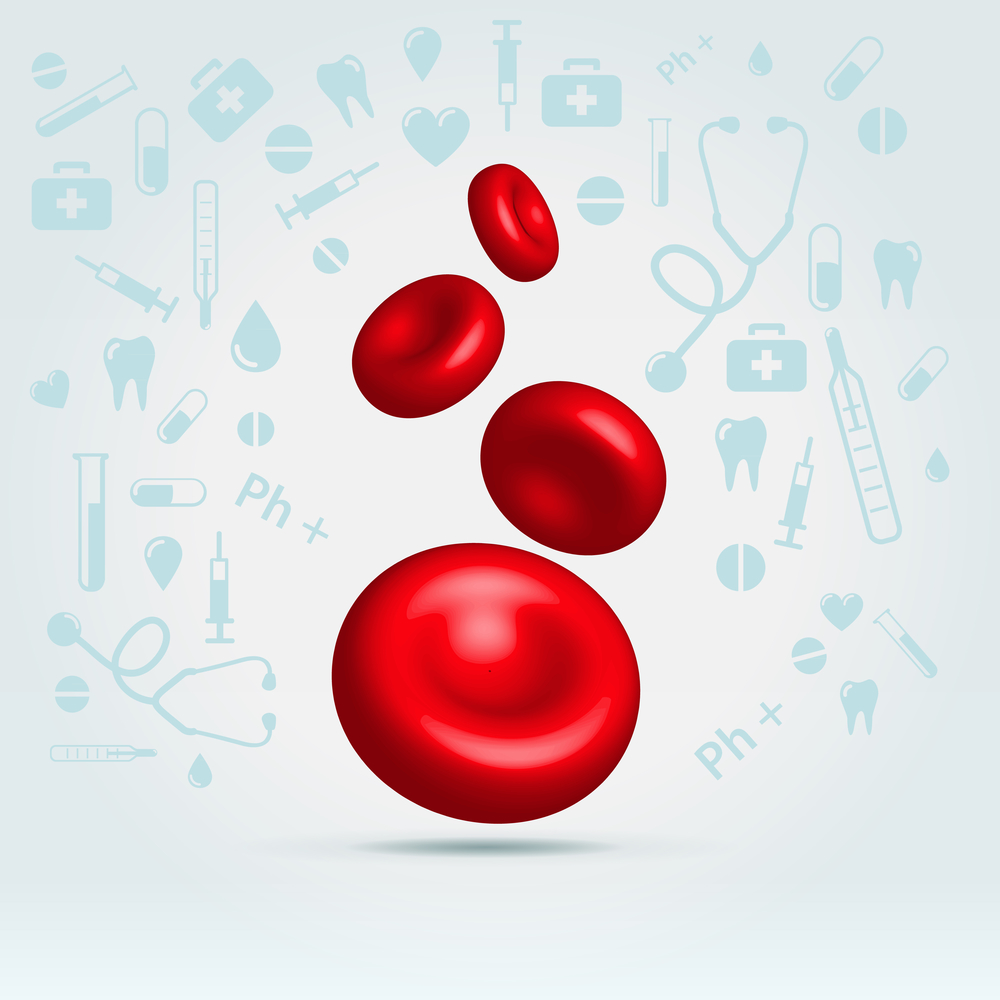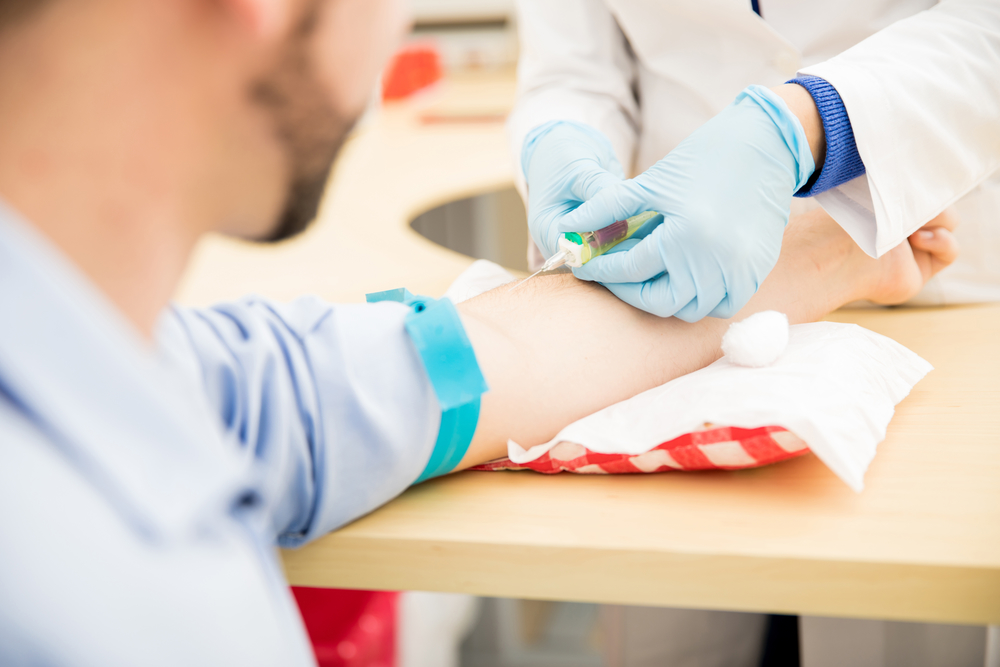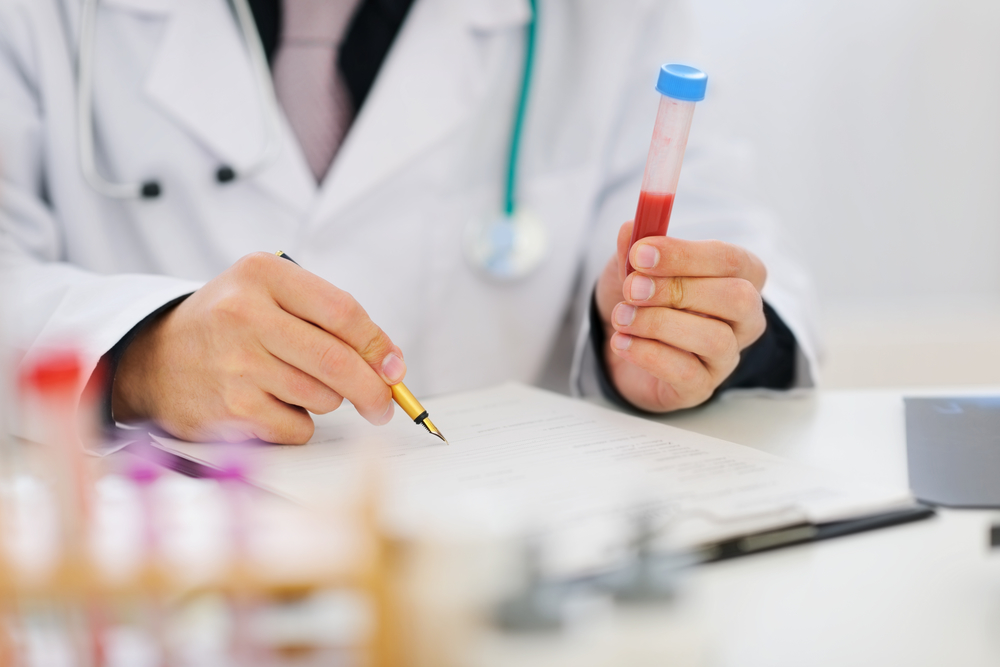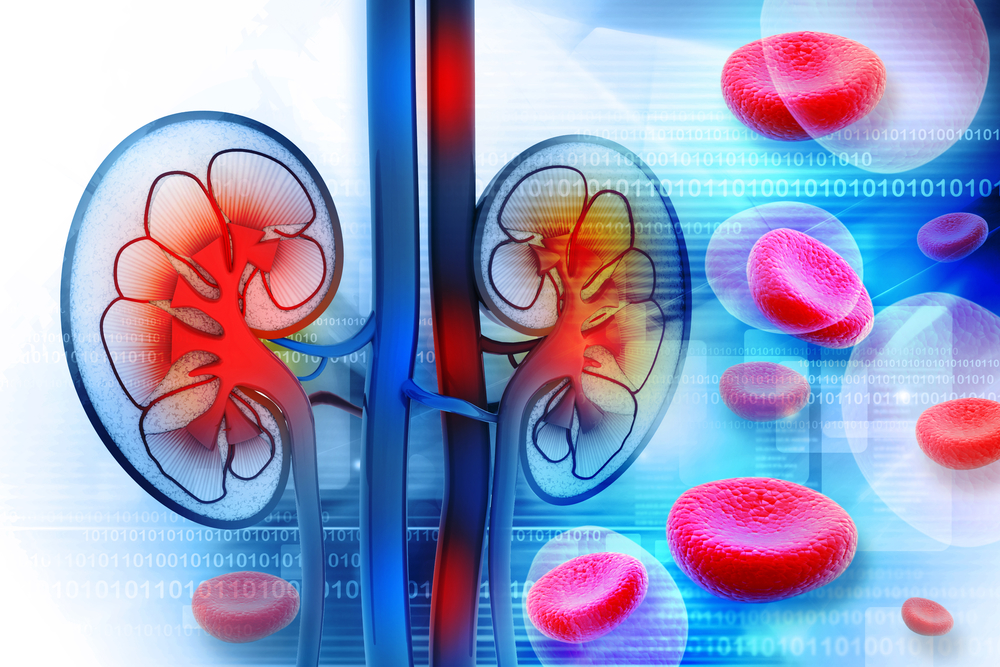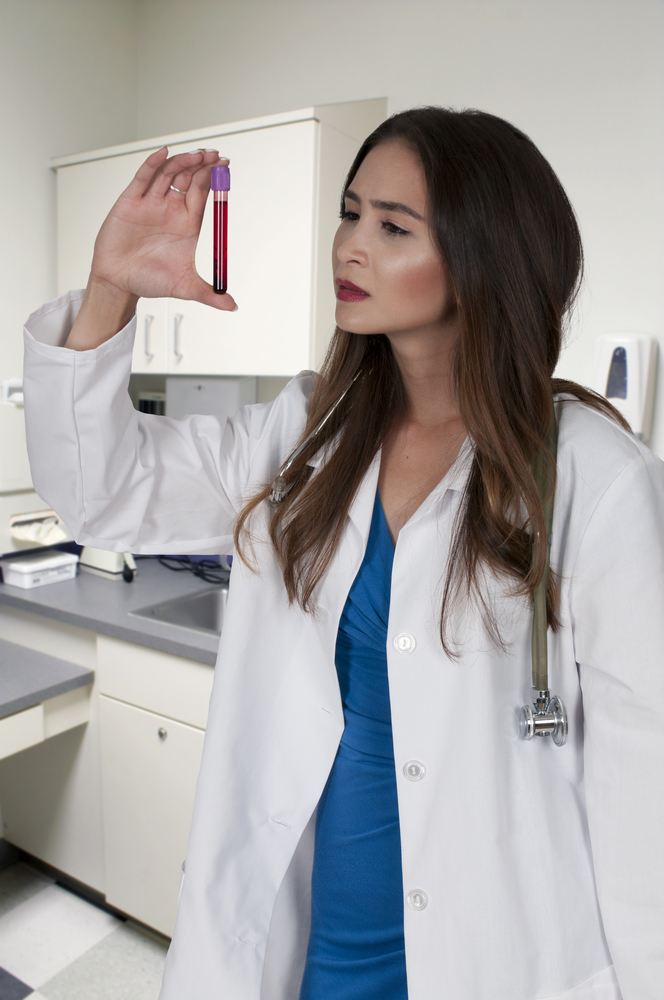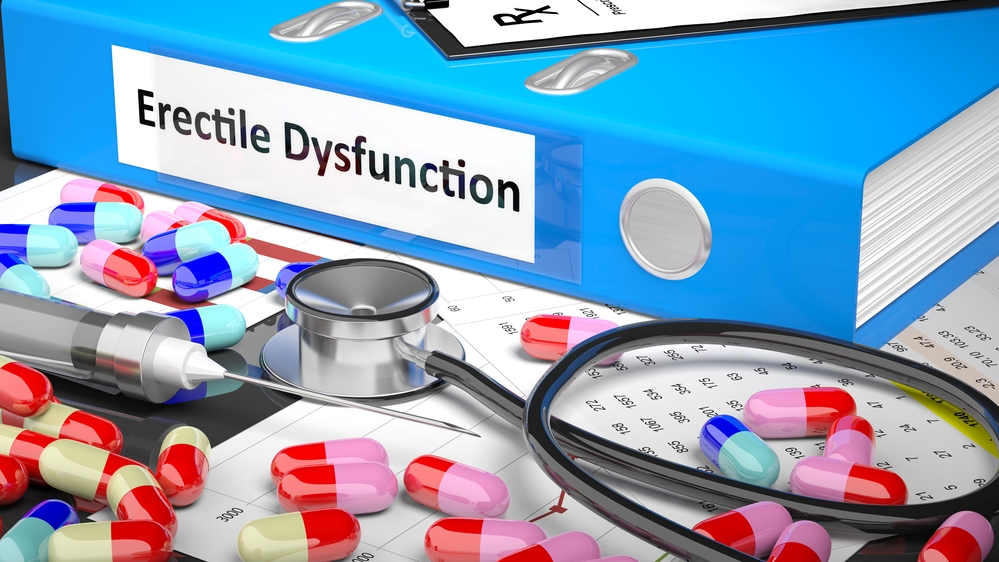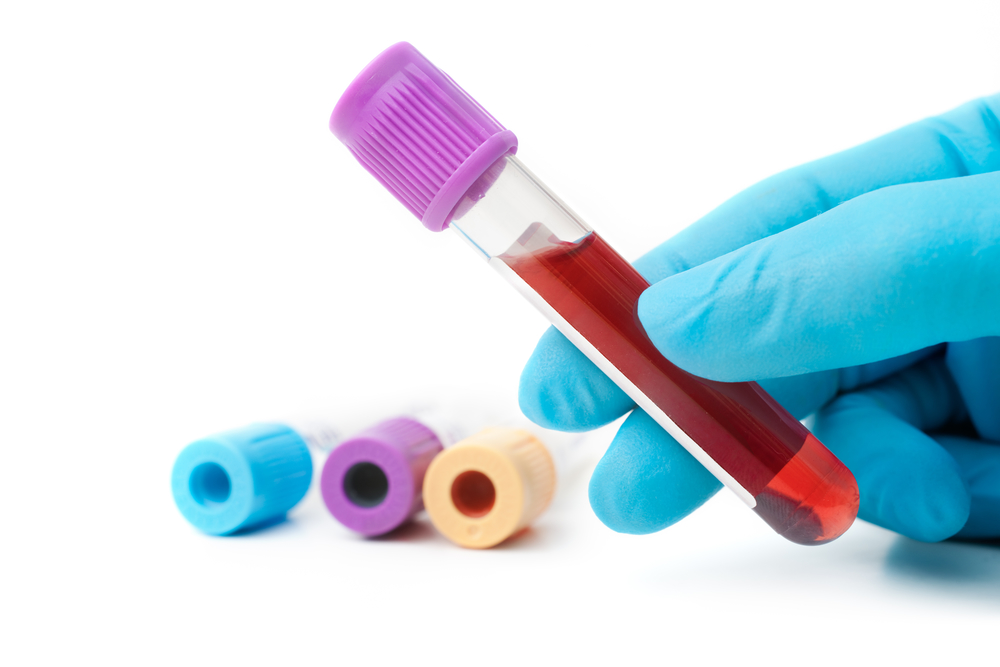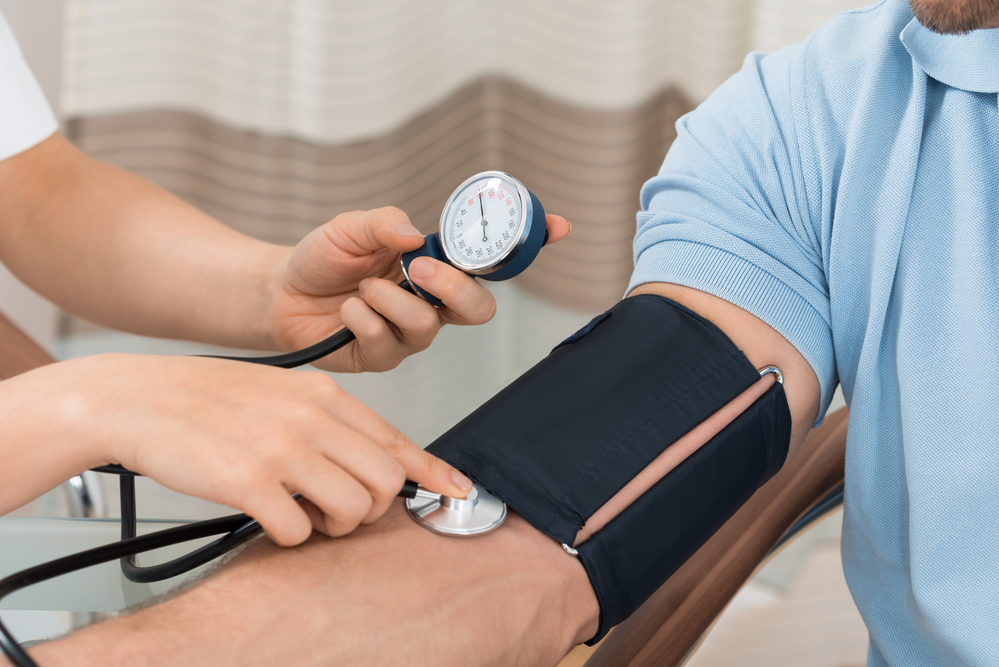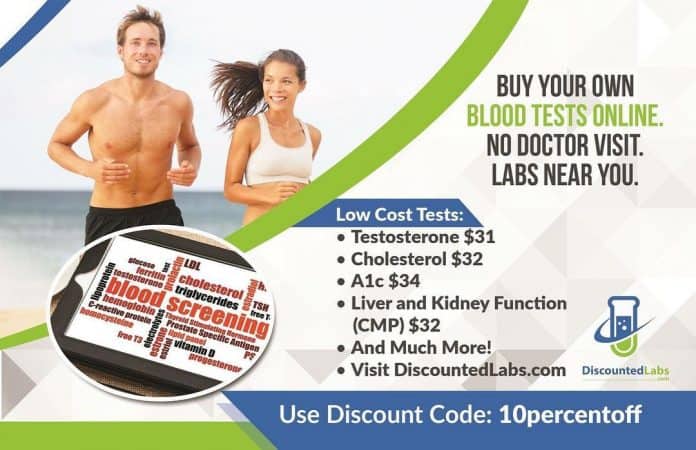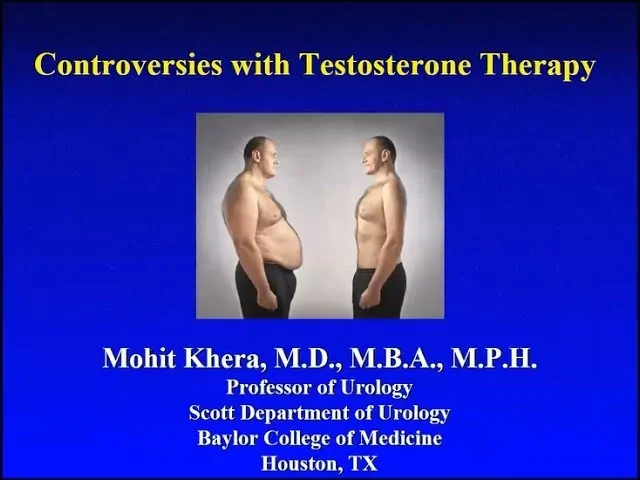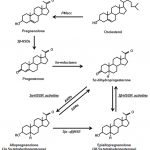High blood pressure or hypertension is a serious medical condition that can go undetected because it often has no symptoms. It’s referred to as “the silent killer” for this reason. High blood pressure can cause heart attacks, strokes, headaches, ruin your kidneys, erectile dysfunction and shrink your brain.
Before you start testosterone replacement TRT, it is very important to get your blood pressure under control. This is done through diet, stress management, lowering your salt intake or the use of blood pressure medications. TRT can increase water retention and blood pressure during the first weeks of treatment. It is a good idea to invest in a home-based blood pressure machine. One usually can be purchased at most pharmacy chains and cost under $ 50. Some, like the OMRON HEM-780, can measure blood pressure easily and keep track of changes with time. Take measurements twice a day until you gain control of your blood pressure again.
Testosterone increases extracellular water ECW. Testosterone acts directly on the kidney, because androgen receptors are expressed in renal tubules. There is evidence that androgens stimulate the expression of the angiotensinogen gene in the kidney, providing a potential mechanism of sodium and water retention by testosterone. This retention can increase weight and blood pressure during the first weeks of TRT. A high proportion of red blood cells (hematocrit) caused by TRT can also increase blood viscosity and blood pressure. High hematocrit can be managed by blood donations.
It is important to have your blood pressure measured during the first month of treatment to ensure that it does not increase with testosterone. The good news is that replacement doses are much less associated with this problem. More serious risks for hypertension are associated with the high testosterone doses associated with performance-enhancing use.
Edema-related swelling is one of TRT’s most troublesome and hard to manage side effects. It can occur to about 20 percent of older patients with comorbidities. The potential causes could be cortisol build up, increase sodium retention, in rare cases high estradiol, or cardiovascular issues..
Most cases of lower extremity (peripheral) edema have nothing to do with estradiol and a lot to do with cardiovascular issues. An important suggestion if edema does not get better after a month on TRT is to get a full cardio workup by a cardiologist.
Some men report decreased edema after a short cycle of a diuretic like HTZ, so that is something to explore. Low sodium intake and plenty of water plus cardio may also help. Cardio exercise and sweating in a sauna have also been reported to help. But these are speculations that should not replace a good cardiovascular work up.
Pulmonary hypertension caused by sleep apnea has also been reported as a cause of edema while on TRT.
Obstructive Sleep Apnea Associated with Leg Edema
“A common but under-recognized cause of edema is pulmonary hypertension, which is often associated with sleep apnea. Venous insufficiency is treated with leg elevation, compressive stockings, and sometimes diuretics. The initial treatment of idiopathic edema is spironolactone. Patients who have findings consistent with sleep apnea, such as daytime somnolence, loud snoring, or neck circumference >17 inches, should be evaluated for pulmonary hypertension with an echocardiogram.”
edema[swelling] what is the cause
Ankle swelling after starting testosterone injections
How many of you are on Diuretics for water retention on TRT?
Here are excerpts from an interesting paper:
“This is the first controlled study demonstrating that testosterone increases extracellular water (ECW). Previous data concerning the effects of testosterone on plasma volume and urinary sodium excretion are limited and conflicting. The underlying mechanism is unknown, but several possibilities exist. Testosterone could act directly on the kidney because androgen receptors are expressed in renal tubules. There is evidence that androgens stimulate the expression of the angiotensinogen gene in the kidney. Therefore, androgens could activate the local renal RAAS to stimulate sodium and water retention through an autocrine or paracrine mechanism. The epithelial sodium channel plays an important role in the sodium balance, as demonstrated by genetic abnormalities in its activity, such as in Liddle’s syndrome. It has recently been reported that androgens increase mRNA expression of the alpha subunit of the epithelial sodium channel in a human renal cell line, providing a potential mechanism of sodium and water retention by testosterone.
Plasma aldosterone levels fell significantly during testosterone treatment, whereas a modest fall, which failed to reach significance, occurred during GH treatment. During combined treatments, a significant fall in Aldo was also observed. The uniform trend toward a fall in Aldo levels observed with single and combined treatments suggests an adaptive response to ECW expansion. The observation that the fall in Aldo was greater in the presence of testosterone suggests that additional androgen-mediated mechanisms are probably involved. Androgen receptors have been identified in human adrenocortical cells and appear to exert an inhibitory influence. In vitro studies have demonstrated that testosterone reduced the proliferation of human adrenal adenoma and adrenocortical cancer cell lines (38). It is possible that testosterone directly suppresses Aldo biosynthesis or secretion, but this remains to be demonstrated.
More on aldosterone
The effects of testosterone on the volume and distribution of ECW could theoretically occur secondary to aromatization to estrogen in peripheral tissues. Estrogen may cause fluid retention through reduction of the plasma antidiuretic hormone (arginine vasopressin)-plasma osmolality set point (39, 40) or stimulating the synthesis of hepatic angiotensinogen (41), enhancing the overall activity of RAAS and leading to sodium retention. However, this postulate is not supported by the observation that urinary sodium excretion is increased during oral contraceptive use (42) or that the plasma renin concentration is reduced in women receiving estrogen treatment (43). Moreover, estrogen reduces the plasma renin concentration, the activity of angiotensin-converting enzyme, and the Aldo response to angiotensin II. These actions of estrogen putatively generated from aromatization of androgens could explain the slight reduction in plasma Aldo levels in response to testosterone in our study.” Source
Men on TRT notice that they hold more water when they eat higher sodium foods, drink alcohol, and skip the gym for more than 3 days. Higher simple carb intake also worsens water retention. Not drinking enough water also makes the body retain water.
NOTE: Some natural ways to decrease blood pressure are decreasing your salt intake, exercising, keeping a normal body weight for your height, managing stress, and engaging in meditation and yoga. “Erection- friendlier” blood pressure medications like ACE (angiotensin-converting enzyme) inhibitors, renin inhibitors, ARB’s (angiotensin II receptor blockers), and combinations of them may be required for men who cannot maintain a blood pressure reading under 130/80 mm Hg. Diuretics, beta blockers, and calcium channel drugs used for hypertension may cause sexual dysfunction in men, but sometimes they cannot be avoided if your blood pressure cannot be controlled with ACE inhibitors or ARBs alone. Bu some studies show that blood pressure medications may be one of the main drug-induced reasons for erectile dysfunction. But managing ED with drugs is a healthier choice than allowing high blood pressure to go untreated due to fears of ED-related side effects. Not only high blood pressure ensure that you have more cardiovascular risks, but it may also negatively affect your kidneys.
VIDEO TRANSCRIPT:
Hormones change as we age. As you can tell, these are different hormones: estrogen, thyroid, progesterone, insulin, testosterone, cortisol, growth hormone, and this is not only male related but also females. Most hormones, as you can tell, go down with age, except insulin and cortisol. Insulin, we become more and more insulin resistant, and our cortisol, which is an inflammatory hormone and stress hormone also increases. Those two trends of increasing insulin and cortisol also make us gain more weight, more fat, get more inflammation and more chronic illness that are related to aging.
Today, I’m only going to focus on one of them, testosterone. Eventually, I will have a lecture on each one of these hormones for you guys to watch, so stay tuned.
Next one. So, testosterone, the target organs. Testosterone is an androgenic hormone. The world, when you say testosterone, equates a hormone to males and the fact is that not only men have it but also women. Women have it at a tenth of a concentration that men have in your bloodstream, but the target organs are pretty much common except obviously for the penile organ. When it comes to the effects of testosterone, it has effects on hair growth, balding, sebum production that sometimes causes acne, liver actually, it improves, promotes, the synthesis of proteins in the liver. When it comes to male sexual organs, it’s responsible for penile growth, spermatogenesis, which is the production of sperm, prostate growth, and function. In the brain, it affects libido and mood. In the muscle, it increases strength and muscle volume. In the kidneys, it stimulates the production, I’m sorry, there is a misspelling there, stimulates the production of red blood cells. In the bone marrow, it stimulates of stem cells. In bone, it accelerates the linear growth in growing boys and girls. It is also obviously associated with bone density.
What are the effects of having low testosterone? I’ll go through different slides and coming up on explaining what low testosterone means and the ranges, et cetera. But one of the effects is sexual dysfunction or lack of interest in sex, some erectile dysfunction, decrease of sense of well being, increase irritation or moodiness, decrease red blood cells to the point that somebody can become anemic, decrease bone marrow density, decrease lean body mass, muscle strength and increase in fat mass. As you can tell, all of them could be associated with aging, but the fact is that normalizing testosterone blood levels can reverse most of these effects.
This is where most of the controversy and discussion occurs, even in 2018, when it comes to defining what’s normal testosterone, where are the normal ranges. Believe it or not, it not only depends on the guidelines, committees and medical groups but also on the different lab companies, like Lap Core and Quest and other lab companies have different ranges. They gather that data from their database on the spread of testosterone and in men that are using, and women, that use their companies.
In general, it’s probably safe to say that the total testosterone, and I’ll explain what that means, total and free testosterone just coming up, they range anywhere from 350 to 1100 in men and from 10 to 50 nanograms per deciliter for women. By the way, this nanograms per liter for people watching the webinar from outside the United States, the units are different. I usually talk about micromoles per liter or other units like that. So, I apologize for that. But these are units used in the States.
The symptoms of low testosterone, as I said, fatigue, low or lack of sex drive, poor appetite, loss of muscle mass and strength, depression and others.
The effect of age on testosterone. Age-related decline begins around 30 to 40 years of age, and approximately 1.2% of testosterone is lost every year, and obviously, that loss can be accelerated by different factors that I’ll be covering soon. The average testosterone of men 75 years of age compared to a younger man of 25 years of age total is about 35% in bioavailable. I’ll speak about what bioavailable means, is 50%.
However, many men in the seventh or eighth decade have normal testosterone levels. So, this is not 100% of rule for everybody. Some men are healthy enough or lucky enough not to have testosterone deficiency when they’re older. Excuse me.
Also, something that we forget sometimes is that the circadian rhythm actually promotes the production of most hormones at night, and the testosterone peaks early in the morning, around 4:00 to 6:00 AM, and it peaks both in older men and younger men. As you can in this graph, the younger men have higher levels and higher peak. The effects are blunted by age. So, you can tell in the older men, there is not as much of a peak and is more of a constant blood level throughout the day, and that happens in most aging men.
What is the testosterone level defined as low? This is another point of controversy and discussion. I don’t think we’re ever going to have groups, medical groups agree, although we’re getting closer as you can tell on this table, but these are different medical groups, European Academy of Urology, the European Association of Urology, International Society of [inaudible 00:08:25], the International Society for the Study of the Aging Male, and the Endocrine Society. The first three agree, and that was the guidelines of 2009 that anything under 350 nanograms per deciliter or for guys outside the United States is 12.1 nanomoles per liter, and free testosterone less than 65 picograms per milliliters.
The TES, which is an endocrine society, I think they just posted new guidelines, but it’s more or less the same value, 300. The disagreement here, too. On the Europeans 350 and believe it or not, there is a group of experts that got together in 2014, it’s the high prescribers, doctors have a lot of experience that agreed that anything under 400 nanograms is considered low.
There’s no agreement. Insurance companies vary, too, when it comes to approval of testosterone therapies. Most of them are going now by 300 to 350. You also have to have the symptoms and the lab test that proves that. For clinics that do not take insurance, cash-based clinics, they tend to be a little bit more flexible when it comes to testosterone blood levels, up to 500 nanograms if you have symptoms of low testosterone. It depends obviously whether or not you’re going to be getting products that are paid by your insurance company or if you’re going to be using, or instance, a compounding pharmacy. I’ll be explaining what compounding pharmacies do and what different changes in the industry are as we speak.
I also reviewed a few studies. I didn’t write the references here because there are too many, but you can go to excelmale.com. I have this information and references. But these are different studies that have linked different levels of testosterone and risks of different pathologies or diseases or issues or health issues. Less than 450, the study linked that to a risk of the increased metabolic syndrome, which is an increase in fat mass, waist circumstance, low HDL, hydro glycerides, et cetera.
Less than 400 in another study linked to venous leakage, which is internal penile damage that affects erectile function. Less than 350, a study linked that to increased death risk and anemia risk. Less than 300, lower libido, weight gain, and diabetes risk increased. Less than 300 increase risk of fractures, memory related issues and depression, risk increases. Less than 250 in another study, increase arterial plaque and decreased sleep quality. Less than 235 in another study, hardening of the arteries and less than 200, a decrease in morning erections. Less than 150, increase inflammation.
As you can tell, 300 or so, 350, 300, it’s kind of a midpoint in all this data. It makes sense so far. What the guidelines have been saying is not far off from what studies are showing when it comes to increased risks of different health issues.
From the book:ANABOLIC STEROIDS-A QUESTION OF MUSCLE-PROBLEMS & SOLUTIONS (By Michael Scally) and edited for the use of this site
Test Reference Range Alanine aminotransferase (ALT, SGPT) Levels are extremely increased in cases of liver cell necrosis of any cause, right heart failure, acute anoxia, extensive trauma, or left heart failure. A slightly high level may indicate cirrhosis, obstructive jaundice, liver tumors, extensive myocardial infarction, myositis, muscular dystrophy, fatty liver, chronic alcohol abuse, or severe pancreatitis. Levels will by low in cases of pyridoxal phosphate deficiency
Female 7-30 U/liter Male 10-55 U/liter Albumin There is no naturally occurring hyperalbuminemia. Any condition that results in the decrease of plasma water will increase the concentration of all plasma proteins, including albumin. Low concentrations of blood albumin may be due to acute and chronic inflammation, decreased synthesis by the liver, increased loss via body surfaces, increased catabolism, or increased blood volume. *albumin is the principal oncotically active component of plasma. As the major plasma protein, albumin acts as a nitrogen pool. Its role in transporting bilirubin, bile acids, metal ions, and drugs will be markedly affected by variations in concentrations.
3.1-4.3 g/dl Alkaline phosphatase (adult) Origins of the major phosphatases are liver, bone, intestine, endometrium, and lung. Ingestion of a meal increases the intestinal isoenzyme of alp in serum, especially in individuals who are blood type o or b and who are Lewis-positive secretors. Increased levels of alp may indicate increased bone metabolism (during healing of fracture, primary and secondary hyperparathyroidism, osteomalacia, or juvenile rickets). May also indicate bone disease, renal disease, or liver disease. Low levels may indicate hypothyroidism, scurvy, gross anemia, vitamin b12 deficiency or nutritional deficiency of zinc or magnesium.
Female 30-100 U/liter Male 45-115 U/liter Androstenedione (adult) Androstenedione is a major precursor in the biosynthesis of androgens and estrogens. It is produced in adrenals and gonads and serves as prohormone for testosterone and estrone. The test is useful in conjunction with other tests in the evaluation and management of androgen disorders
50-250 ng/dl Aspartate aminotransferase (AST, SGOT) Increased levels may indicate liver cell necrosis or injury of any cause, including cholestatic and obstructive jaundice, chronic hepatitis, or drug-induced injury to liver. May also be associated with hepatic metastases and hepatoma, necrosis or trauma to heart or skeletal muscle, inflammatory disease of heart or skeletal muscle, heart failure, Forbes’s disease, heat stroke, hypothyroidism, intestinal obstruction, lactate acidosis, or toxic shock syndrome. Also distinguishes neonatal hepatitis from biliary atresia.
Female 9-25 U/liter Male 10-40 U/liter Bilirubin, direct High serum blood levels are associated with intrahepatic and extrahepatic biliary tree obstruction, hepatocellular damage, cholestasis, Dubin-Johnson syndrome, or rotor’s syndrome.
0.0-0.4 mg/dl Bilirubin, total High serum levels may indicate hepatocellular damage (inflammatory, toxic, neoplastic), intrahepatic and extrahepatic biliary tree obstruction, hemolytic diseases, fructose intolerance, hypothyroidism or neonatal physiological jaundice
0.0-1.0 mg/dl Calcium High blood calcium levels may indicate primary and tertiary hyperparathyroidism, malignant disease with bone involvement (in particular metastatic carcinoma of the breast, lung, kidney, multiple myeloma, lymphomas, and leukemia), vitamin d intoxication, milk-alkali syndrome, Paget’s disease with immobilization, thyrotoxicosis, acromegaly, diuretic phase of acute tubular necrosis or dehydration. Low levels of calcium may indicate hypoparathyroidism; vitamin d deficiency, chronic renal failure, magnesium deficiency, prolonged anticonvulsant therapy, acute pancreatitis, anterior pituitary hypofunction, hypoalbuminemia, or inadequate nutrition.
8.5-10.5 mg/dl Carbon dioxide content, total High levels may indicate respiratory acidosis caused by poor gas exchange or depression of respiratory center; generalized respiratory disease; metabolic acidosis (after severe vomiting in pyloric stenosis, hypokalemic states, or excessive alkali intake). Low levels may indicate compensated respiratory alkalosis, metabolic acidosis in diabetes mellitus, renal glomerular or tubular failure, renal tubular acidosis and intestinal loss of alkali with coexisting increase in c1 and normal anion gap
24-30 mmol/liter Chloride High chloride levels may be attributed to dehydration, renal tubular acidosis, acute renal failure, diabetes insipidus, metabolic acidosis associated with prolonged diarrhea with loss of nahco3, respiratory alkalosis, and some cases of primary hyperparathyroidism. Low serum chloride levels may be due to excessive sweating, prolonged vomiting from any cause or gastric suction, persistent gastric secretion, salt-losing nephritis, aldosteronism, potassium depletion associated with alkalosis, respiratory acidosis
100-108 mmol/liter Cholesterol High total cholesterol levels may indicate familial or polygenic hyperlipoproteinemia types IIa and IIb, hyperlipidemia, hyperlipoproteinemias secondary to hepatocellular disease, intra- and extrahepatic cholestasis, chronic renal failure, malignant neoplasms of pancreas and prostate, hypothyroidism, gout, ischemic heart disease, pregnancy, diabetes, alcoholism, analbuminemia, dysglobulinemia, anorexia nervosa, idiopathic hypercalcemia, acute intermittent porphyria, or isolated hgh deficiency. Low levels may be associated with lipoprotein deficiency, hepatocellular necrosis, malignant neoplasm of liver, hyperthyroidism, malabsorption, malnutrition, megaloblastic anemias, chronic obstructive lung disease, mental retardation, rheumatoid arthritis, or intestinal lymphangiectasia. *secondary disorders that elevate cholesterol levels should be ruled out prior to initiating therapy with cholesterol-lowering drugs. *factors that have variable effects on cholesterol levels in different people include posture before and at time of blood sampling, a recent meal, emotional stress, and menstrual cycle.
Desirable < 200 mg / dl Borderline high 200-239 mg/dl High > 239 mg/dl Creatinine High serum or plasma levels may indicate renal function impairment, both acute and chronic; active acromegaly and gigantism, hyperthyroidism, and meat meals. Creatine supplements can increase creatinine. It is always good to calculate your eGFR to make sure it is not under 60: https://nkdep.nih.gov/lab-evaluation/…culators.shtml
0.6-1.5 mg/dl Dehydroepiandrosterone (DHEA) sulfate (adult) Decreased levels may be associated with increased age in men & women, hyperlipidemia, psychosis, or psoriasis. Weakly androgenic
Male 10-619 µg/dl Female Premenopausal 12-535 µg/dl Postmenopausal 30-260 µg/dl Estradiol (ultra sensitive) Estradiol is the most active of endogenous estrogens. The test is of value, together with gonadotropins, in evaluating menstrual and fertility problems in adult females. Measurement is also useful in the evaluation of gynecomastia or feminization states due to estrogen or producing tumors.
Female Menstruating Follicular phase 50-145 pg/ml Midcycle peak 112-443 pg/ml Luteal phase 50-241 pg/ml Postmenopausal <59 pg / ml Male < 50 pg / ml Follicle-stimulating hormone (FSH) In hypogonadism, FSH and LH levels lower than normal for the patient’s age indicate hypothalamic or pituitary problems; higher levels indicate a primary gonadal defect
Female Menstruating Follicular phase 3.0-20.0 U/liter Ovulatory phase 9.0-26.0 U/liter Luteal phase 1.0-12.0 U/liter Postmenopausal 18.0-153.0 U/liter Male 1.0-12.0 U/liter Globulin High levels may be associated with chronic hepatitis, plasma cell dyscrasias/ lymphoproliferative disorders, cirrhosis, chronic liver diseases, chronic infections or certain autoimmune disorders. Low levels may indicate immune deficiency or suppression or lymphoproliferative disorder. Decreases in all fractions may be seen in bulk loss of proteins into the gut. 2.6-4.1 g/dl Glucose, fasting Serum glucose levels may be high due to diabetes mellitus, strenuous exercise, increased epinephrine, pancreatic disease or an endocrine disorder. A high serum level may also be related to acute myocardial infarction or severe angina, chronic liver disease, or chronic renal disease.
70-110 mg/dl (gamma)-Glutamyltransferase (GGT) Very high levels can be associated with obstructive liver disease and posthepatic obstruction. Moderately high levels may indicate liver disease (inflammation, cirrhosis, space-occupying lesions), infectious mononucleosis, renal transplant, hyperthyroidism, myotonic dystrophy, diabetes mellitus, pancreatitis, or alcohol-induced liver disease. Low GGT levels will indicate hypothyroidism. *useful marker for pancreatic cancer, prostatic cancer, and hepatoma because levels reflect remission and recurrence.
Male 1-94 U/liter Female 1-70 U/liter Growth hormone (resting) Secretion of GH is episodic and pulsatile; highest values occur during periods of deepest sleep. Ability to secrete GH in response to a conventional challenge declines with age. Random levels of GH provide little diagnostic information; GH secretion is best assessed during tests that stimulate or suppress release. Patients with GH-producing pituitary disorders often release GH in response to TRH or GnRH; and patients with suspected GH deficiencies have subnormal responses to stimulation tests (i.e. GH stimulation test after arginine, insulin, l-dopa, glucagon, propanolol and insulin tolerance test.)
2-5 ng/ml Hemoglobin A1C Glycated hemoglobin concentration appears to reflect the mean blood glucose concentration over the previous 4-8 wks. This test, while not useful for the diagnosis of diabetes mellitus, has been shown to be useful in monitoring its long-term control. Glycated hemoglobins are increased as a reflection of hyperglycemia during the lifespan of erythrocytes
3.8-6.4% High-density lipoprotein cholesterol, as major risk factor Epidemiological studies demonstrate the inverse association between HDL-c levels and the incidence and prevalence of coronary heart disease (CHD). It is suggested that for every 5 mg/dl decrease in HDL-c below the mean, the risk of CHD increases 25%. Another approach in assessing CHD risk is to calculate the ratio of HDL-c to either LDL-c or total cholesterol. The following primary disease states can lead to secondary decrease in HDL-c: uncontrolled diabetes, premature coronary heart disease, hepatocellular disorders, cholestasis, nephrotic syndrome, and chronic renal failure.
above 40 mg/dl men
above 50 mg/dl womenInsulin Decreased serum levels indicate inadequately treated type I diabetes mellitus. High serum levels may indicate insulin overdose, insulin resistance syndromes, or endogenous hyperinsulinemia
2-20 U/ml Lactate dehydrogenase (LDH) Extremely high levels may indicate megaloblastic and pernicious anemia, extensive carcinomatosis, viral hepatitis, shock, hypoxia or extreme hyperthermia. Very high levels are associated with cirrhosis, obstructive jaundice, renal diseases, neoplastic diseases, skeletomuscular diseases, or congestive heart failure. Mildly high levels are associated with any cellular injury that results in loss of cytoplasm, myocardial or pulmonary infarction, leukemias, hemolytic anemias, hepatitis (nonviral), sickle cell disease, lymphoma, renal infarction, or acute pancreatitis.
110-210 U/liter Lipoprotein(a) 0-30 mg/dl Low-density lipoprotein cholesterol LDL encompasses all of the lipoproteins with density greater than 1.006 kg/l and less than or equal to 1.063 kg/l. High levels may indicate primary hyperlipoproteinemia types IIa and IIb; tendon and tuberous xanthomas, corneal arcus, and premature coronary heart disease. The following diseases can lead to secondary elevation of LDL-c: hyperlipoproteinemia secondary to hypothyroidism, nephrotic syndrome, hepatic obstruction, hepatic disease, pregnancy, anorexia nervosa, diabetes, chronic renal failure, and Cushing’s syndrome.
Desirable < 130 mg/ dl
Borderline high risk 130-159 mg/dl High risk greater than or equal to 160 mg/dl Iron High serum levels may indicate pernicious, aplastic, and hemolytic anemias; hemochromatosis, acute leukemia, lead poisoning, acute hepatitis, vitamin b6 deficiency, excessive iron supplementation/therapy, repeated transfusions, or nephritis. Low serum iron levels may indicate iron-deficiency anemia, remission of acute and chronic infection, carcinoma, nephrosis, hypothyroidism, or postoperative state. *symptoms of iron poisoning include abdominal pain, vomiting, bloody diarrhea, cyanosis, lethargy, and convulsions. Levels may vary widely for an individual within the same day or from day to day.
45-180 ug/dL (MALES FEMALES). Luteinizing hormone (LH) Test used to determine the preovulatory LH surge; also provides an integrated picture of LH secretion throughout the day. Shows pituitary or hypothalamic impairment or overproduction
Female Menstruating Follicular phase 2.0-15.0 Ovulatory phase 22-105 Luteal phase 0.6-19 Postmenopausal 16-64 Male 2.0-12.0 Magnesium Mg plays a vital role in glucose metabolism by facilitating the formation of muscle and liver glycogen from blood-borne glucose. Also participates as a cofactor in the breakdown of glucose, fatty acids, and amino acids during energy metabolism. High serum levels may indicate dehydration, renal insufficiency, uncontrolled diabetes mellitus, adrenocortical insufficiency, Addison’s disease, hypothyroidism or lupus erythematosus. Phytate, fatty acids, and an excess of phosphate impair mg absorption. Symptoms of deficiency usually do not occur until serum levels are above 1 meq / liter
1.4-2.0 meq/liter Phosphorus, inorganic (adult) Serum phosphorus concentrations have a circadian rhythm (highest level in late morning, lowest in evening) and are subject to rapid change secondary to environmental factors such as diet (carbohydrate), phosphate-binding antacids, and fluctuations in growth hormone, insulin, and renal function. High levels may indicate osteolytic metastatic bone tumors, myelogenous leukemia, milk-alkali syndrome, vitamin d intoxication, healing fractures, renal failure, hypoparathyroidism, pseudohypoparathyroidism, diabetes mellitus with ketosis, acromegaly, portal cirrhosis, pulmonary embolism, lactic acidosis or respiratory acidosis.
2.6-4.5 mg/dl Potassium High potassium levels are associated with reduced renal excretion of potassium or redistribution of potassium in the body (i.e. Massive hemolysis, severe tissue damage, severe acute starvation-anorexia nervosa, hyperkinetic activity, malignant hyperpyrexia following anesthesia, hyperkalemic periodic paralysis, and dehydration).
3.4-4.8 mmol/liter Progesterone The diagnostic value of this test lies in its detection of ovulation and in the evaluation of the function of the corpus luteum. Serial sampling during the menstrual cycle is required. During menopause, levels drop to 0
Female Follicular phase > 1 ng / ml Midluteal phase 3-20 ng/ml Male < 1 ng / ml Prolactin May help assess Prolactin reserve and abnormal Prolactin secretion by the pituitary. May indicate pituitary tumors.
Female Premenopausal 0-20 ng/ml Postmenopausal 0-15 ng/ml Male 0-15 ng/ml Prostate-specific antigen (PSA) PSA is prostate-tissue specific, not prostate-cancer specific. Used for early detection of the recurrence of prostatic cancer. The test is of great value as a marker in the follow-up of patients at high risk for disease progression. PSA values increase with age.
Female 0 Male less than 40 years of age 0.0-2.0 ng/ml greater than or equal to 40 yr old 0.0-4.0 ng/ml Prostate-specific antigen (PSA), free, in males 45-75 yr old, with PSA values between 4 and 20 ng/ml above 25% associated with benign prostatic hyperplasia Protein, total High blood levels may be associated with anabolic steroid use, androgens, corticosteroids, coritcotropin, epinephrine, insulin, progesterone, or thyroid preparations. Severe protein deficiency, chronic liver disease, malabsorption syndrome, and malnutrition may also lead to abnormal levels. Serum total protein decreases in the third trimester of pregnancy.
6.0-8.0 g/dl Sodium High serum levels are associated with water loss in excess of salt through skin, lungs, GI tract, and kidneys. Also may indicate increased renal sodium conservation in hyperaldosteronism, Cushing’s syndrome or disease, inadequate water intake because of inadequate thirst mechanism, dehydration, or excessive saline therapy. Low sodium levels may indicate low sodium intake, sodium losses due to vomiting, diarrhea, excessive sweating with adequate water intake and inadequate salt replacement, diuretics abuse, or salt-losing nephropathy
135-145 mmol/liter Somatomedin C (Insulin-like growth factor I) Blood concentrations of IGF-1 are constant during the day and after eating. In acromegaly, the test may serve as an indicator of the severity of the disease; serial determinations may be used to monitor efficacy of treatment. In dwarfism IGF-1 may be used to determine the response to GH therapy. Concentrations of IGF-1 rise during the first year of life, reaching the highest values in preadolescent or early adolescent years. Normal values tend to decline progressively until age 50
16-24 yr 182-780 ng/ml 25-39 yr 114-492 ng/ml 40-54 yr 90-360 ng/ml > 54 yr 71-290 ng/ml Testosterone, total (morning sample) This test is a measure of total circulating testosterone, both protein bound and free. In adult men, serum levels peak in the early morning, decreasing 25% to the evening minimum. Levels increase after exercise and decrease after immobilization and after glucose load. Progressive decreases begin after age 50
Female 6-86 ng/dl Male 270-1070 ng/dl Testosterone, unbound (morning sample) Free (nonprotein-bound) testosterone is independent of changes in concentrations of the principal testosterone transport protein, sex hormone-binding globulin.
Female 20-40 yr 0.6-3.1 pg/ml 41-60 yr 0.4-2.5 pg/ml 61-80 yr 0.2-2.0 pg/ml Male 20-40 yr 15.0-40.0 pg/ml 41-60 yr 13.0-35.0 pg/ml 61-80 yr 12.0-28.0 pg/ml Thyroid-stimulating hormone (TSH) First-line test for hyper- and hypothyroidism. Test is considered by some to be the preferred screening test for evaluation of thyrometabolic states. Moderately high TSH is often found in euthyroid patients during treatment of hyperthyroidism.
0.5-5.0 U/ml Thyroxine, total (T4) Used in conjunction with other tests to measure thryoid function. T4 testing is frequently used when TSH levels are abnormally high or low. In hypothyroidism, total serum t4 falls before t3. High serum levels may represent hyperthyroidism.
4.5-10.9 g/dl Transferrin Transferrin is the major plasma transport protein for iron. High serum levels may indicate iron deficiency (high levels often precede the appearance of anemia by days to months). Serum ferritin levels fall with iron deficiency and with generalized malnutrition but remain normal in the presence of inflammation and iron deficiency
191-365 mg/dl Triglycerides (fasting) Increased triglyceride levels indicate hyperlipoproteinemia types I, IIb, III, IV, and V due to familial or sporadic endogenous hypertriglyceridemia. The following primary disease states or conditions can lead to secondary elevation of triglycerides: obesity, impaired glucose tolerance, viral hepatitis, alcoholism, alcoholic cirrhosis, biliary cirrhosis, acute and chronic pancreatitis, extrahepatic biliary obstruction, nephrotic syndrome, chronic renal failure, essential hypertension, acute myocardial infarction, chronic ischemic heart disease, cerebral thrombosis, hypothyroidism, diabetes mellitus, gout, pregnancy, glycogen storage diseases types I, II, III, and IV, down syndrome, respiratory distress syndrome, Werner’s syndrome, anorexia nervosa, or idiopathic hypercalcemia. Low levels of triglycerides may indicate chronic obstructive lung disease, brain infarction, hyperthyroidism, hyperparathyroidism, lactosuria, malnutrition, malabsorption syndrome, intestinal lymphangiectasia or end-stage parenchymal liver disease.
40-150 mg/dl Triiodothyronine, total (T3) Used in conjunction with other tests to measure thyroid function. High serum levels may indicate hyperthyroidism while low levels may indicate hypothyroidism. At least 80% of circulating T3 is derived from monodeiodination of T4 in peripheral tissues. Free T3 and free T4 can also be of great value in thyroid work-ups. T3 is 4 to 5 times more potent in biological systems than T4.
60-181 ng/dl Urea nitrogen (BUN) (adult) High serum blood levels may indicate impaired kidney function associated with an increase with age or protein content of diet.
8-25 mg/dl Uric acid High serum levels may indicate gout, renal failure, leukemia, lymphoma, psoriasis, polycythemia, multiple myeloma, kidney disease, and or chronic lead nephropathy. Associated with hyperlipidemia, obesity, hypertension, arteriosclerosis, diabetes mellitus, hypoparathyroidism, acromegaly, and liver disease.
Male 3.6-8.5 mg/dl Female 2.3-6.6 mg/dl Differential blood count Reference Range Neutrophils 45-75% Bands 0-5% Lymphocytes 16-46% Monocytes 4-11% Eosinophils 0-8% Basophils 0-3% Erythrocyte count Red Blood Cell count; filled with hemoglobin and specialized for carrying O2 and CO2 (adult)
Male 4.50-5.30 X 106/mm3 Female 4.10-5.10 X 106/mm3 Ferritin Surplus iron is stored as Ferritin, primarily in the liver
Male 30-300 ng/ml Female 10-200 ng/ml Folate (folic acid) Water soluble vitamin involved with amino acid metabolism & transfer of single-carbon units in nucleic acid
Normal 3.1-17.5 ng/ml Borderline deficient 2.2-3.0 ng/ml Deficient < 2 ng / ml Excessive above 17.5 ng/ml Hematocrit (adult) % of Red Blood Cells present in total blood
Male 37.0-49.0 Female 36.0-46.0 Hemoglobin (adult) Oxygen-carrying compound of blood. Numerical value of hemoglobin present in Red Blood Cells
Male 13.0-18.0 g/dl Female 12.0-16.0 g/dl Iron Constituent of hemoglobin (transport of oxygen in blood) and enzymes involved in energy metabolism
Ferritin should also be measured in those undergoing phlebotomies or blood donation to ensure it is not low.30-160 g/dl Leukocyte count (WBC) White Blood Cell (WBC); Central to the immune system that defends against infection
4.5-11.0X103/mm3 Mean corpuscular hemoglobin (MCH) Value is calculated from hemoglobin and erythrocyte count. MCH= Erc÷Hb
25.0-35.0 pg/cell Mean corpuscular hemoglobin concentration (MCHC) Mean cell hemoglobin concentration is calculated from Hb and hematocrit (Hct)
MCHC= Hct÷Hb
31.0-37.0 g/dl Mean corpuscular volume (MCV) (adult) Mean cell volume may not be reliable when a large number of abnormal erythroctes or a dimorphic population of erythrocytes is present. It may also be calculated from the hematocrit and erythrocyte count
MCV= Erc÷Hct
Male 78-100 m3 Female 78-102 m3 Platelet count Helps mediate the blood clotting that prevents loss of blood after injury
150-350X103/mm3 Platelet, mean volume 6.4-11.0 m3
Proper monitoring of men on testosterone replacement therapy has been dictated by several medical guidelines groups. However, most of them fall short in guiding doctors on what to do if different key variables are not optimal. The following list includes all important blood tests and health variables for men before they are prescribed testosterone and while on testosterone replacement therapy.
The following panels can be obtained on DiscountedLabs.com, the most affordable online lab test company (No doctor visit required. Prescription provided. Most US cities except the following states: NY, NJ, NH, MA and RI- No labs in VT,ME and HI)
Pre- TRT Male Hormone / Wellness PanelTRT Male Hormone/Wellness Follow Up Panel
Testosterone replacement therapy- Target Blood Test Limits
Hematocrit under 53 (donate blood if equal or over 53. High hematocrit (large amount of red blood cells) makes your blood thick which is not good for your cardiovascular health)PSA under 3 (4 is max since doctors will not prescribe TRT at this number)
Estradiol (ultrasensitive) between 20-50 pg/mL or higher in men on TRT
Blood pressure under 135/85 (high blood pressure can make you feel winded, increase cardiovascular risks and affect kidneys)
Estimated Glomerular (eGFR) (kidney function) over 60 ( keep blood pressure under control and avoid supplements that may load your kidneys)
Liver enzymes not elevated over 20 percent of top value of reference range. (Exercise can increase ALT and AST. Testosterone in gels, injections, pellets etc does not increase liver function. Be careful with supplements!)
TSH under 2.5 (higher numbers can point at low thyroid function, which causes a lot of the symptoms of low testosterone)
Total Testosterone over 500 ng/dL (many men feel better above 600-700 ng/dL)
Free Testosterone equal or above 2 percent of total (lower percentage means your sex hormone binding globulin is high and grasping more testosterone).
If donating blood to bring hematocrit down, ferritin never under 30 ng/mL or micrograms/liter (Donating blood more frequently than every 3 months can decrease ferritin which can cause fatigue).
Free T3 (if hypothyroid and on treatment) in the upper quartile of range. (depending on range it can be 3.7- 4.2 pg/mL)
HDL over 40 mg/dL (low levels of good cholesterol can affect cardiovascular health- Higher T doses can decrease HDL)
For more information on how to manage these variables and other testosterone related potential side effects, visit: Testosterone Side Effect Management Table
OPTIMUM REQUIRED LAB WORK (Preferred but not mandatory)1 ——- Estradiol- sensitive via LC/MS test (not EIA!) [Quest Labs code 30289]
(Labcorp code: 140244) (baseline, week 6 or 8, month 6)GOAL: 20-50 pg/mL
2 ——- Testosterone, Free and Total (baseline, week 6-8, month 6, then yearly)
GOAL: Total testosterone over 500 ng/mL and free T 2 percent or more of total T.
3 ——- DHEAs (baseline, month 6, month 12 (if supplementing))
4 ——- Comprehensive Metabolic Panel w/EGFR (baseline, week 6-8, month 6 and then once a year)
GOAL: Normal CBC including liver enzyme elevations under 20 percent and eGFR over 60
5 ——- CBC w/ diff/PLT (baselines, week 6-8, month 6 and then once or twice per year)
GOAL: Normal CBC
6 ——- Lipid profile (fasting sample) (baselines, month 6, then once per year unless LDL is high and/or HDL is low)
GOAL: Normal lipids
7 ——- T3, free (for those with low thyroid symptoms)
GOAL: Upper quartile free T3
8 ——- T4, free (for those with low thyroid symptoms)
Goal: Normal free T4
9 ——- TSH (baseline, month 6, yearly after that depending on value and treatment)
GOAL: TSH under 2.5
10 ——– Prostatic Specific Antigen (PSA) (Baseline before testosterone treatment, 6-8 weeks after and then yearly)
GOAL: PSA under 3
11——– LH and FSH (for men not on testosterone yet)- Used to diagnosed primary or secondary hypogonadism. Do not waste money testing your LH and FSH if you are on testosterone since they will be undetectable.
For those with excessive fatigue: Saliva Cortisol + DHEA (4 specimens during one day) (you can wait for after 6 weeks on TRT). Ferritin is also a test that can be considered.
GOAL: Normal cortisol graph and values along with proper cortisol/DHEA ratios
Optional Tests:
Vitamin D (25 (OH)D test)- Most people have low vitamin D, so spending money on this may be optional. Taking 5000 IU per day brings blood levels up to desired range in most people.Folate and Vitamin B-12- Low only if you suffer from malnutrition or malabsorption.
Lab test results mean little unless health information is provided. Here is a sample health questionnaire that could be filled at baselines, week 6 or 8 and then every 6 months to assess progress in quality of life.
ADAM questionnaire about symptoms of low testosterone
(Androgen Deficiency in the Aging Male)This basic questionnaire can be very useful for men to describe the kind and severity of their low testosterone symptoms.
1. Do you have a decrease in libido (sex drive)? Yes No
2. Do you have a lack of energy? Yes No
3. Do you have a decrease in strength and/or endurance? Yes No
4. Have you lost height? Yes No
5. Have you noticed a decreased “enjoyment of life” Yes No
6. Are you sad and/or grumpy? Yes No
7. Are your erections less strong? Yes No
8. Have you noticed a recent deterioration in your ability to play sports? Yes No
9. Are you falling asleep after dinner? Yes No
10. Has there been a recent deterioration in your work performance? Yes NoIf you answered Yes to number 1 or 7 or if you answer Yes to more than 3 questions, you may have low Testosterone.
What is your IIEF erectile function score?
Posting blood test results without comprehensive quality of life information may not get you the best quality of input from members of this site.To save time and make your questions clearer, please review this list. You can copy and paste it on a post and add your answers if you wish. This will ensure that you get the best quality input from members.
HEALTH AND QUALITY OF LIFE INFORMATION:
Age:
Height:
Weight:
Waist size:
Neck size:
Marital status?
Do you have small children?
Do you still want to have children?
Have you lost weight in the past 6 month? If yes, how many pounds?
Have you gained weight in past 6 months? If yes, how many pounds?
Has your body tone changed in the past 6 months (harder, softer)?
When was your last complete physical examination?
What were the results of that exam?
(FOR OVER 40) Did you have your prostate examined by digital rectal exam?
(FOR OVER 40) Did you have your PSA checked?
If so, what was it?
Are you taking testosterone now?
If answer to above question is NO, have you taken testosterone in the past? How long and when did you last stop?
Do you urinate alright (you fully void)?
How many times do you get up at night to urinate ?
Does it hurt when you urinate?
Is there any blood in your urine?
Have you had prostatitis (prostate/urinary infections) in the past?
Describe any acne history:
Did you have gynecomastia (increased breast tissue swelling) when young?
Do you have cold intolerance?
Do you bruise easily?
Do you have:
Depression
Anxiety
Decreased sexual potency (erection quality). If so, is this causing stress in your relationship?
Decreased sex drive
Do you have morning erections? _____ If yes, how many times per week (estimate)?
Do you feel your testicles are smaller than they used to be?
Sleep disturbances
Generalized muscle aches and pains
Joint pain
Fatigue
Lethargy
Diabetes
Previous heart attack
Previous clotting issues
Leg/ankle swelling
Sensitive or swollen nipples?
Can you feel any lumps around your nipples?
Are you losing your hair?
Have you ever taken Propecia or Proscar (finasteride) for hair loss or prostate inflammation or Accutane for acne?
Have you had a traumatic head injury?
Have you taken pain killers (opiates) for several months?
SLEEP
Have you ever been diagnosed with sleep apnea via a sleep study? If yes, do you use a CPAP machine?Do you take frequent naps?
Do you feel refreshed when you wake up in the morning?
Average hours of sleep per night:
Do you usually go to bed after 10 pm ?
DIET AND EXERCISE
Tell us about your diet (The more details, the better)
Do you exercise? If yes, what type and how frequently?
Do you feel that you procrastinate a lot and do not have enough mental focus to finish projects?
Are you experiencing a lot of stress lately? For how long and why?
MEDICATIONS AND SUPPLEMENTS
Do you take any prescription medications or medications bought on the internet or black market?
If so, please list, and give dosages:What supplements do you take (vitamins, minerals, neutraceuticals, etc.)? List all (with amounts or dosages) each day.
QUESTIONS FOR STEROID USERS ONLY
How many times have you been on a steroid cycle (if any)?
How long ago was your first steroid cycle (if any)?
How long was your break before starting this cycle?
Did you have swollen or painful nipples BEFORE you ever used steroids (for men who have used anabolics steroids- AAS)?
Have you needed to donate blood or get a therapeutic phlebotomy due to high hematocrit (red blood cell volume)?
Describe your past usage, if any, of hCG, Nolvadex, Clomid, Arimidex or finasteride:
Have you ever had any problems (side effects) with any of the medications mentioned in the last question If so, please describe:
Did you use a post-cycle therapy (PCT) program after stopping the cycle (s)? If yes, please describe:
Did you get your total and free testosterone tested after PCT?
More information on blood tests: Click here
SaveSave
Before undergoing testosterone replacement therapy (TRT), it’s vital to obtain a number of blood tests. The main blood tests to measure are total and free testosterone, hematocrit, PSA, estradiol, HDL cholesterol and others. Pre-treatment testing provides doctors with baseline values to diagnose hypogonadism (low testosterone) and asses overall health. Baseline tests are also conducted during TRT as well, ensuring that doctors can adjust TRT dose and catch side effects before they become an issue.
But do you know why these tests are needed or what they mean? Below, you’ll find some of the main blood tests that have been shown to be affected by TRT, so doctors measure them before and during therapy to prevent or manage side effects:https://www.discountedlabs.com/blog/m…-testosterone/
SaveSave
What Is Creatinine and Creatinine Clearance?
Creatinine is a waste product that is produced continuously during normal muscle breakdown. The kidneys filter creatinine from the blood into the urine, and reabsorb almost none of it.
The amount of blood the kidneys can make creatinine-free each minute is called the creatinine clearance. Creatinine clearance in a healthy young person is about 125 milliliters per minute — meaning each minute, that person’s kidneys clear 125 mL of blood free of creatinine. The GFR can vary depending on age, sex, and size. Generally, the creatinine clearance is a good estimation of the glomerular filtration rate.
Measuring Creatinine Clearance and Renal Function
Doctors use creatinine and creatinine clearance tests to check renal function (kidney function). Testing the rate of creatinine clearance shows the kidneys’ ability to filter the blood. As renal function declines, creatinine clearance also goes down.
There are two main ways doctors use creatinine tests to measure kidney function:
Creatinine clearance can be precisely determined by measuring the amount of creatinine present in a sample of urine collected over 24 hours. This method requires a person to urinate exclusively in a plastic jug for one day, then bring it in for testing. Although the urine creatinine measurement method is inconvenient, it may be necessary to diagnose some kidney conditions.
GFR can be estimated using a single blood level of creatinine, which your doctor enters into a formula. Different formulas are available, which take into account age, sex, and sometimes weightand ethnicity. The higher the blood creatinine level, the lower the estimated GFR and creatinine clearance.
For practical reasons, the blood test estimation method for GFR is used far more often than the 24-hour urine collection test for creatinine clearance.
A low GFR or creatinine clearance demonstrates kidney disease. The decline in kidney function can be either acute (sudden, often reversible) or chronic (long-term and irreversible). Repeated GFR or creatinine clearance measurements over time can identify kidney disease as acute or chronic.
Kidney function and creatinine clearance naturally decline with age. Fortunately, the kidneys have a huge reserve capacity. Most people can lose well over half their renal function without symptoms or significant problems.
Doctors determine the severity of chronic kidney disease with a staging system that uses GFR:
Stage 1: GFR 90 or greater (normal kidney function)
Stage 2: GFR 60-90 (mild decline in kidney function)
Stage 3: GFR 30-59 (moderate decline in kidney function)
Stage 4: GFR 15-29 (severe decline in kidney function)
Stage 5: GFR less than 15 (kidney failure, usually requiring dialysis)
People over age 60 may have an apparently normal creatinine blood level, but still have a low GFR and creatinine clearance. The 24-hour urine collection method, or one of the GFR estimation formulas, can more accurately identify the decline in kidney function.
How Do I Know If I Have Kidney Disease?
Blood and urine tests can help uncover signs of early kidney disease and monitor the condition.
Blood pressure . Your health care provider will devise a plan, which may include diet changes and medications, to keep your blood pressure as close to normal as possible. Target blood pressure is defined as less than 130/80.
Blood electrolytes. When the kidneys are not working correctly, you can develop high potassium and low calcium, phosphorus, bicarbonate, which can affect your heart’s conduction system and cause muscle aches and other complications.
Urine protein or albumin in the urine. Albumin is the main protein in the blood. When the kidneys become damaged, the holes in the filtering system of your kidneys become enlarged, allowing protein to leak into the urine. In the early stages of kidney damage, only small amounts of albumin (microalbuminuria) are found. This test is very important for people with diabetesbecause at this early stage of kidney damage, further deterioration can often be prevented by diet, exercise, and medications.
GFR (glomerular filtration rate). This is a measure of how well the kidneys are filtering blood. An estimate of your “filtering rate” is determined by a blood test called a blood creatinine test, which measures the amount of creatinine — a waste product — in your blood. This test, along with your age, body size, and gender, provides an estimate of your GFR. The GFR, or “filtering rate,” helps confirm normal or low kidney function. A score of 90 or above is normal; a score below 15 indicates kidney damage that will require dialysisor a kidney transplant. Another commonly used test to estimate GFR is a creatinine clearance. This test measures the creatinine in the blood and urine to determine kidney function.
Your health care provider may also refer you to a kidney specialist, called a nephrologist, for more specialized testing. A kidney biopsy may also be performed. During a kidney biopsy a small amount of kidney tissue is removed for microscopic exam to pinpoint the cause of kidney damage and plan treatment.
How Can I Prevent Kidney Disease?
The key to prevention or delay of severe kidney disease is early detection and aggressive intervention — while there’s still time to slow down the progression to kidney failure. Medical care with early intervention can change the course of chronic kidney disease and help prevent the need for dialysis or a kidney transplant.
Diabetes and high blood pressure account for two thirds of all cases of chronic kidney disease. By aggressively managing diabetes and high blood pressure with diet, exercise, and medications, you may be able to prevent kidney failure and help keep as much kidney function as possible.
Know Your Risks for Kidney Disease
Since diabetes and high blood pressure put you at risk of kidney disease, know where you stand with these risks. Do you have diabetes or high blood pressure? If so, are they under control?
If you can, find out if diabetes, hypertension, or kidney disease runs in your family. Certain ethnic groups, such as African-Americans, Hispanics, Pacific Islanders, and Native Americans are at higher risk of chronic kidney disease, as are senior citizens.
Get Tested Regularly
At your next checkup, and at least within the next year if you haven’t had these tests done:
Ask for a urine test to see if you have excess protein, glucose, or blood in the urine.
Ask for a blood pressure reading, to see if your blood pressure is elevated.
Ask for a fasting blood glucose test, to see if you have too much glucose (sugar) in your blood. Another blood test that can be used to determine diabetes is a hemoglobin A1C which will indicate your average blood glucose level over the past two to three months
Ask for a creatinine test. This blood test measures the amount of waste from muscle activity. When the kidneys are not working properly, the creatinine rises.
If any of these tests are abnormal, your health care provider will need to do other tests to more clearly define the problem.
Control Diabetes
If you have diabetes, work with your health care provider to keep your blood sugar levels under the best possible control. A program of diet, regular exercise, glucose monitoring, andmedicationsto control blood sugars and protect kidney function can help.
Medications for Kidney Disease
High blood pressure may be both a cause and a result of kidney disease. Your health care provider may prescribe a blood pressure drug for your kidney disease, such as an angiotensin-converting enzyme (ACE) inhibitor, such as captopril(Capoten), enalapril (Vasotec), fosinopril (Monopril), lisinopril (Prinivil, Zestril), or ramipril (Altace), or an angiotensin receptor blocker (ARB), such as azilsartan (Edarbi), eprosartan (Teveten), irbesartan (Avapro), losartan (Cozaar), olmesartan (Benicar), and valsartan (Diovan). Along with controlling blood pressure, these drugs may reduce the amount of protein in your urine, which may also help your kidneys over time.
Drugs are excreted through the kidneys, so you’ll need to consult with your health care provider before taking any medications — including over-the-counter drugs. You may be told to avoid NSAIDs, such as ibuprofen (Motrin,Advil) andnaproxen (Aleve) and COX-II inhibitors, like celecoxib(Celebrex), which are possible contributors to kidney disease. Always discuss any alternative or herbal treatments with your doctor before trying them.
Kidney Conditions
Pyelonephritis (infection of kidney pelvis): Bacteria may infect the kidney, usually causing back pain and fever. A spread of bacteria from an untreated bladder infection is the most common cause of pyelonephritis.
Glomerulonephritis: An overactive immune system may attack the kidney, causing inflammation and some damage. Blood and protein in the urine are common problems that occur with glomerulonephritis. It can also result in kidney failure.
Kidney stones (nephrolithiasis): Minerals in urine form crystals (stones), which may grow large enough to block urine flow. It’s considered one of the most painful conditions. Most kidney stones pass on their own but some are too large and need to be treated.
Nephrotic syndrome: Damage to the kidneys causes them to spill large amounts of protein into the urine. Leg swelling (edema) may be a symptom.
Polycystic kidney disease: A genetic condition resulting in large cysts in both kidneys that impair their function.
Acute renal failure (kidney failure): A sudden worsening in kidney function. Dehydration, a blockage in the urinary tract, or kidney damage can cause acute renal failure, which may be reversible.
Chronic renal failure: A permanent partial loss of kidney function. Diabetes and high blood pressure are the most common causes.
End stage renal disease (ESRD): Complete loss of kidney function, usually due to progressive chronic kidney disease. People with ESRD require regular dialysis for survival.
Papillary necrosis: Severe damage to the kidneys can cause chunks of kidney tissue to break off internally and clog the kidneys. If untreated, the resulting damage can lead to total kidney failure.
Diabetic nephropathy: High blood sugar from diabetes progressively damages the kidneys, eventually causing chronic kidney disease. Protein in the urine (nephrotic syndrome) may also result.
Hypertensive nephropathy: Kidney damage caused by high blood pressure. Chronic renal failure may eventually result.
Kidney cancer: Renal cell carcinoma is the most common cancer affecting the kidney. Smoking is the most common cause of kidney cancer.
Interstitial nephritis: Inflammation of the connective tissue inside the kidney, often causing acute renal failure. Allergic reactions and drug side effects are the usual causes.
Minimal change disease: A form of nephrotic syndrome in which kidney cells look almost normal under the microscope. The disease can cause significant leg swelling (edema). Steroids are used to treat minimal change disease.
Nephrogenic diabetes insipidus: The kidneys lose the ability to concentrate the urine, usually due to a drug reaction. Although it’s rarely dangerous, diabetes insipidus causes constant thirst and frequent urination.
Renal cyst: A benign hollowed-out space in the kidney. Isolated kidney cysts occur in many normal people and almost never impair kidney function.
Kidney Tests
Urinalysis: A routine test of the urine by a machine and often by a person looking through a microscope. Urinalysis can help detect infections, inflammation, microscopic bleeding, and kidney damage.
Kidney ultrasound: A probe placed on the skin reflects sound waves off the kidneys, creating images on a screen. Ultrasound can reveal blockages in urine flow, stones, cysts, or suspicious masses in the kidneys.
Computed tomography (CT scan): A CT scanner takes a series of X-rays and a computer creates detailed images of the kidneys.
Magnetic resonance imaging (MRI scan): A scanner uses radio waves in a magnetic field to make high-resolution images of the kidneys.
Urine and blood cultures: If an infection is suspected, cultures of the blood and urine may identify the bacteria responsible. This can help target antibiotic therapy.
Ureteroscopy: An endoscope (flexible tube with a camera on its end) is passed through the urethra into the bladder and ureters. Ureteroscopy generally cannot reach the kidneys themselves, but can help treat conditions that also affect the ureters.
Kidney biopsy: Using a needle inserted into the back, a small piece of kidney tissue is removed. Examining the kidney tissue under a microscope may help diagnose a kidney problem.
This panel is designed to measure the health and recovery of the Hypothalamic-Pituitary-Testicular Axis (HPTA) after attempting to normalize it spontaneously or with the use of Post-Cycle Therapy (PCT) with hCG, clomiphene and/or tamoxifen. PCT is prescribed by some physicians for men who stop testosterone replacement therapy (TRT) or Anabolic-Androgenic Steroids (AAS).
Testosterone replacement therapy and anabolic steroids can lead to HPTA (Hypothalamic-Pituitary-Testicular Axis- shown in figure below) dysfunction. Supplemental testosterone can inhibit the release of the body’s own testosterone production through negative feedback inhibition on LH levels. This feedback inhibition also results in suppression of FSH levels, leading to suppression of sperm production (spermatogenesis).
It is suggested that this panel be done no sooner than 4 weeks after PCT cessation and in a fasting state (morning time)
Tests included:
– Sensitive Estradiol (E2) by Liquid Chromatography/Mass Spectrometry (LC/MS assay used to more accurately measure estradiol in men)
– Total and Free Testosterone [ Free T: direct analog/radioimmunoassay (RIA); Total T:electrochemiluminescence immunoassay (ECLIA) ]
– Luteinizing Hormone (LH) (Responsible for activating Leydig testicular cells to produce your own testosterone). This hormone is shut down by testosterone replacement or AAS.
– Follicle Stimulating Hormone (FSH) (Responsible for activating Sertoli testicular cells to produce sperm). This hormone is shut down by testosterone replacement or AAS.
– CBC – Complete Blood Count (Includes hematocrit)
– CMP – Comprehensive Metabolic Panel (Includes liver and kidney function, glucose and electrolytes)
BUY POST PCT PANEL
- How to Read Your Comprehensive Metabolic Panel (CMP)Have you ever wondered what the numbers and complicated words on your blood tests mean? In this video, we will talk about the comprehensive metabolic panel, a series of blood tests which assess your …
- Tired of Being Tired?- Our New Fatigue Exploration Panel Can HelpFatigue is can be very frustrating for many people since it can have several causes. There’s the normal tiredness we feel at the end of every day, the tiredness that comes from being a hard-working …
- Top Ten Testosterone Replacement Monitoring TipsNelson Vergel, author of Testosterone: A Man’s Guide (Amazon.com) and founder of ExcelMale.com and DiscountedLabs.com, talks about what he thinks are the most important 10 things that all men on test …
- Testosterone Replacement Therapy- Target Blood Test LimitsTestosterone replacement therapy- Target Blood Test Limits:These values have been collected from three TRT guidelines and clinical practices around the United States:Hematocrit (percent of red blood …
- Do You Need a Detailed NMR Cholesterol Profile ?The NMR LipoProfile® test is an advanced cardiovascular diagnostic test that uses nuclear magnetic resonance (NMR) spectroscopy to uniquely provide rapid, simultaneous and direct measurement of LDL p …
- Testosterone Replacement Blood Test Targets and Their ManagementTestosterone Replacement Monitoring Targets and Their Management(Consult Your Physician Before Any Treatment Initiation, Cessation or Changes). Total Testosterone ≥ 500 ng/dL for im …
- Monitoring Your Blood Tests While on TestosteroneBefore undergoing testosterone replacement therapy (TRT), it’s vital to obtain a number of blood tests. The main blood tests to measure are total and free testosterone, hematocrit, PSA, estradiol, HD …
- What You Should Know About the Main Side Effect of TestosteroneTestosterone replacement therapy (TRT) is one of the most effective ways to combat low testosterone levels, but it’s vital that you understand the risks associated with the treatment. As with any f …
I do not much about them but I am asked frequently about blood testing labs in the UK since my company, DiscountedLabs.com, only services the U.S.
www.bloodtestslondon.com
Since the concentration of cystatin C in the blood will not change due to infection or inflammation and isn’t affected by body weight, drugs or diet – cystatin C level could be a more reliable indicator of kidney health than creatinine (2).
Testing for cystatin may also be useful to detect kidney disease early when the affected person isn’t experiencing many (if any) symptoms, and other test results are normal.
What is Cystatin C?
Cystatin C is a protein found in almost all the cells in the body. Cystatin C helps to regulate the activity of enzymes needed to break down bigger molecules both inside of and around those cells (3).
Cystatin C level in the blood can be measured to determine how well the kidneys are functioning (3). The kidneys, liver, and spleen all work to filter the blood and excrete any waste substances as urine. This filtration process happens in a microscopic structure in the kidneys; the glomerulus (4). Each kidney contains approximately one-million glomeruli that function as tiny sieves to extract waste. The glomerular filtration rate (GFR) rate is a measure of how well the glomeruli are filtering blood (4).Click here: https://www.discountedlabs.com/blog/…_c_blood_test/
SaveSave
Lab Tests: What Do They Mean?
https://www.discountedlabs.com/education/
Price: $195
https://www.discountedlabs.com/ed-panel
Tests included:
Prolactin: High levels have been linked to ED and low libido.
Total and Free Testosterone: Low levels have been linked to ED and low libido.
Sensitive Estradiol: High or low levels have been linked to libido.
DHT: Low levels have been linked to libido.
TSH: High levels have been linked to hypothyrodism which has been linked to ED and low libido.
Free T3: Low levels have been linked to ED and libido.
Free T4: High or low levels in the presence of low free T3 may be linked to libido.
This panel is designed to measure the health and recovery of the Hypothalamic-Pituitary-Testicular Axis (HPTA) after attempting to normalize it spontaneously or with the use of Post-Cycle Therapy (PCT) with hCG, clomiphene and/or tamoxifen. PCT is prescribed by some physicians for men who stop testosterone replacement therapy (TRT) or Anabolic-Androgenic Steroids (AAS).
Testosterone replacement therapy and anabolic steroids can lead to HPTA (Hypothalamic-Pituitary-Testicular Axis- shown in figure below) dysfunction. Supplemental testosterone can inhibit the release of the body’s own testosterone production through negative feedback inhibition on LH levels. This feedback inhibition also results in suppression of FSH levels, leading to suppression of sperm production (spermatogenesis).
It is suggested that this panel be done no sooner than 4 weeks after PCT cessation and in a fasting state (morning time)
Tests included:
– Sensitive Estradiol (E2) by Liquid Chromatography/Mass Spectrometry (LC/MS assay used to more accurately measure estradiol in men)
– Total and Free Testosterone [ Free T: direct analog/radioimmunoassay (RIA); Total T:electrochemiluminescence immunoassay (ECLIA) ]
– Luteinizing Hormone (LH) (Responsible for activating Leydig testicular cells to produce your own testosterone). This hormone is shut down by testosterone replacement or AAS.
– Follicle Stimulating Hormone (FSH) (Responsible for activating Sertoli testicular cells to produce sperm). This hormone is shut down by testosterone replacement or AAS.
– CBC – Complete Blood Count (Includes hematocrit)
– CMP – Comprehensive Metabolic Panel (Includes liver and kidney function, glucose and electrolytes)
BUY POST PCT PANEL
SaveSave
The most common error in blood pressure measurement is use of inappropriate cuff size. Considerable overestimation can occur if the cuff is too small. The bladder length recommended by the AHA is 80 percent of the patient’s arm circumference, and the ideal width is at least 40 percent. Error is minimized when the cuff width is 46 percent of the arm circumference, although for large adult and thigh cuffs this is not practical. In obese patients, longer, wider cuffs are needed to compress the brachial artery adequately. In children, cuff bladder width should be at least 40 percent of the arm circumference halfway between the olecranon and acromion; the cuff should then cover 80 percent or more of the arm circumference. Recommended cuff sizes are listed in Table 3.
For correct cuff placement, the midline of the cuff bladder should be positioned over the arterial pulsation in the patient’s upper arm following palpation of the brachial artery in the antecubital fossa. There should be a 2– to 3–cm space for the stethoscope between the lower end of the cuff and the antecubital fossa, unless this would require an undersized cuff. In patients with an arm circumference greater than 50 cm, the cuff should be wrapped around the forearm, supported at heart level, and the radial pulse felt at the wrist https://www.aafp.org/afp/2005/1001/p1391.html
SaveSave
Syringes & alcohol pads (No prescription needed. Mailed to your home)
https://www.otcwholesale.com/diabetic-syringes.htmlhttps://www.medical-and-lab-supplies….d-needles.html
https://www.gpzmedlab.com/store/c/18…th-Needle.aspx
https://www.allegromedical.com/syring…e-p563422.html
Blood tests (No doctor visit- Most US cities):
ED drugs no prescription
NOTE FROM NELSON: Please make sure that you create an email address just for these orders since you may get spammed later. Also, never give your real phone number. They may ask for a doctor name and prescription but I know guys who do not provide them and they still get their stuff. Many guys on ExcelMale have purchased using echecks safely.
Best: www.ReliableRx.com
Compounding Pharmacies:
EmpowerPharmacy
www.APSmeds.com
Cheap testosterone test:
$30 – No prescription required. Most US Cities: https://www.discountedlabs.com/testos…otal-and-free/How to Find a Doctor:
https://www.excelmale.com/showthread….nd-AnastrozoleFree ebook:
https://excelmale.com/Ebook-Optimize-…stosterone.pdfSupplement info:
www.examine.comHCG info:
https://www.excelmale.com/showthread….erve-FertilityHCG or Trimix Prescription Program
Simple Testosterone + HCG injection protocol:
https://www.excelmale.com/content.php…-Testicle-Size
Amazon store of selected health products:
https://astore.amazon.com/welcnelssblo-20
Search for answers to common questions:
PART 1
Nelson: Hello everybody, Nelson Vergel here with ExcelMale.com. I’m very happy to have Dr. Lawson from the Washington DC area. She’s a long term friend of Excel Male and the work we do with men’s health and testosterone replacement therapy, among other things. Dr. Lawson is the founder and the Medical Director of Proactive Wellness Center of Vienna, Virginia.
The center was founded in 2006 and is one of the leading anti-aging and functional medicine specialty practices in the Metropolitan DC area, serving patients from Northern Virginia and Maryland, Washington DC and surrounding areas. Some people even fly over a thousand miles to see Dr. Lawson. Lawson specializes in treating men and women with hormone replacement, weight management, and a functional approach to treating and preventing chronic disease and therapies to reverse the symptoms of aging and enhancing overall wellness and longevity. Dr. Lawson is a Board Certified in anti-aging and regenerative medicine with the American Board of Anti-Aging and Regenerative Medicine and is a board certified anesthesiologist (retired) and an avid researcher. She’s here today to share with us aspects of testosterone replacement therapy and beyond that we usually do not consider either when we’re thinking about starting therapy or when we’re [monitored 00:01:39] while we’re doing testosterone replacement. Welcome Dr. Lawson. Thank you so much for volunteering for this new experiment we’re doing today, showing the PowerPoint slides while you’re speaking. Thank you so much and welcome.
Lynese: Thank you so much. I’m happy to be here.
Nelson: Why don’t we start with your first introduction of the slides and what your topics will be?
Lynese: Good. Today, we’ll be talking about low thyroid function, insulin resistance, heart disease prevention, and CIRS. That standards for chronic inflammatory response syndrome.
Nelson: Why are these different topics important to consider in men beyond TRT? Why don’t you go through the first one which is low thyroid?Lynese: A lot of men come to me and they really are fatigued. They just don’t have the zest that they have for life. They think that testosterone replacement therapy is the only answer. Oftentimes, that does make a big difference but many times, people suffer from hypothyroidism which is low thyroid function. There’s hyperthyroidism but it’s more common to have a patient who presents with hypothyroidism. Hypothyroidism frequently does go undiagnosed though because doctors tend to look only at the lab results and overlook the clinical symptoms of fatigue, difficulty losing weight, cold intolerance, brittle nails. It’s so obvious to me that we have to look at the thyroid, but so many times, physicians just don’t really even ask the questions and a lot of times, they just think that it’s because of low testosterone levels and they ignore the thyroid, but there are certain ways that we have to look at thyroid function and it goes along with doing the right tests.
Nelson: Yeah. That’s the tricky part.
Lynese: It’s tricky. It really is. When I do a thyroid function panel on someone, I check for the TSH which is thyroid stimulating hormone, the T3 Free, the T4 Free, and the Thyroid Peroxidase antibodies. Now, most doctors just check for a TSH which is thyroid stimulating hormone, as I just mentioned before, but thyroid stimulating hormone is a pituitary hormone and it doesn’t always line up with what’s happening peripherally with the actual thyroid hormones. Now, the T3 Free is one of the most important lab test that we need to look at but most of the time again, doctors will just look at TSH and Free T4 if they look at the T3 T4 Free at all.Many doctors miss a lot of people just by not doing the right tests.
Nelson: Before we move on, I just want to make this open discussion. Why do you think there is such a barrier here when it comes to hypothyroidism or hyperthyroidism diagnosis? Why are we using this TSH test as a main diagnosis test when we know we have data that that may actually be not the only indicative factor involved?
Lynese: That’s a great question. That’s just the way doctors are taught. They’re taught that way in medical school. They just look at the TSH. For example, the reference range for a thyroid stimulating hormone is .4 to 4.5. A lot of doctors will look at the TSH and if it’s above 3 or 3.5, then they will say, “Oh, you have hypothyroidism. You have low thyroid function,” but there are people who have a TSH at that lower end of that reference range, and again that’s a pituitary hormone so sometimes the pituitary is not giving the best indicator of what’s happening in the body but that’s just the way they’ve been taught and it’s been hard to shift a lot of doctors beyond that teaching that they’ve known for years and years and years.
A lot of the integrative doctors these days are doing the right tests to come up with the diagnosis and the other thing is, you look at the labs but you can’t just look at the labs only. A person is not a sheet of paper. You have to look at the labs and you have to look at what’s going on clinically in order to really make a diagnosis.
Nelson: Good point. I’m glad you reviewed that. All right.
Lynese: Next, I will speak a little bit about treating low thyroid. The most common thyroid medication is the T4 medication. Examples of those are Synthroid, Levothyroxine. Those are T4-only preparations. A lot of people need T3. They’re low in T3. They don’t convert T4 to T3 very well, and a lot of people do not do that, so if you don’t check the T3 level and if you don’t replace it, a lot of times, people won’t get better. There are options for a T3/T4 thyroid medication. We can compound it. We love our compounding pharmacies and I hope they continue to flourish and thrive. Compounding pharmacies can make very specific dosages of T3 and T4. We can get commercial preparation such as Armour Thyroid. That’s a desiccated thyroid medication. Armour’s not the only one. There are other derivatives that have different [pillar 00:07:20] such as Westhroid, Nature-Throid, but it’s the T3 that really makes the difference in a lot of people. I’ve seen people who have been on thyroid medication. They still felt tired. They still weren’t losing weight. Then as soon as we add the T3 to their regimen, it’s like something magical happens and they’re much better so you have to look. If any of you think that you have a problem with your thyroid function, you definitely want to have your doctor do a Free T3, a Free T4 and I like to see the Free T3 and in the high 3s to the low 4s. We can talk about that at another time, but this is informational just to give you what you want to look for.
One more thing I want to mention is thyroid antibodies. A lot of us have autoimmune disease and that’s when our immune system starts to attack our own cells, our own tissues. For example, I saw a lady who had thyroid antibodies greater than 1,000. Depending on the lab that you go to, they should be less than 34 for [Quest 00:08:28], less than 9 for a LabCorp lab result. Her thyroid antibodies were greater than a thousand. I said, “Has anybody ever tested that?” that’s an indication that a person has Hashimoto’s thyroiditis. She had been on thyroid medication for 20 years and no one had ever tested. You know if you have one autoimmune disease, you are at risk for others so you really want to make sure that you figure out why the body is attacking itself and address that as well.
Nelson: That’s a good point. It’s often misdiagnosed or not even looked at. I’ve known a few men that had TSH of 3.8 and their doctor told them, “You’re okay.” They had all the symptoms and they went ahead and some men and women are obviously accessing online blood testing. I have a company called the [inaudible 00:09:21]. They say, “You know, I’m still having all the symptoms. My doctor told me I was okay.” They go in, get their full thyroid panel like you said Free T3, Free T4, and antibodies. I happen to know 2 people that had really high antibodies so they had Hashimoto’s and the doctor had told them that their TSH was fine. If it wasn’t because they took that extra step, obviously, they switched doctors, they might never found out.
Lynese: Right. It’s nice that patients have access to be able to get the labs if they get resistance from their physician.
Nelson: Yeah. One of them was wondering why testosterone was not working and that was a good reason why.
Lynese: Exactly.
Nelson: We’re starting now with the insulin resistantance issue.
Lynese: Right. Insulin resistance is very common these days and it’s a precursor to diabetes, type 2 diabetes. Now, diabetes is the fifth leading cause of death in the United States. It’s a fast growing health issue. I see people who are insulin resistant who never knew that they were. They will tell me, “My blood sugar’s fine,” but they are insulin resistant and wewill go over why we determine or how we determine actually that they are insulin resistant. Let’s go to the next slide.
When the glucose level rises after a meal, the pancreas secretes insulin. Insulin is secreted in order to bring glucose into the cells or into the tissues to be utilized as energy. When you eat a sugary or carbohydrate meal, the insulin level is going to rise, but sometimes when we eat too much sugar, then our insulin levels become very, very high and over time, it causes us to not be able to really utilize our insulin properly. In summary, you eat a sugary meal, the insulin level goes up to bring the blood sugar down. Sometimes it overshoots, the glucose gets too low, the person gets irritated, they have low blood sugar. We really got to look at our diet and make sure we’re not challenging our bodies with too much sugar. Too much sugar is probably the main reason why most people have diabetes. It’s a lifestyle issue, really.
Nelson: Yeah. We are bombarded with food that contains sugar or hidden sugars.
Lynese: Exactly. They say that the standard American diet, it really is sad, but the average American consumes 150 pounds of sugar per year. Isn’t that amazing?
Nelson: That’s crazy.
Lynese: That’s a lot of sugar.
Nelson: Our ancestors never had any need for sugar.
Lynese: I know. Then a lot of people are deceived and the food industry really deceives us in that they will say, “Oh, something sugar-free. If they’re sugar-free and it’s sweet, it’s got artificial sweeteners on it. Artificial sweeteners do the same thing with the insulin levels as does sugar, even worse. Actually sugar is even healthier to eat then artificial sweeteners. We don’t look at labels closely enough. Anything that pretty much ends in ose; maltose, dextrose, sucrose, sucralose. That’s what’s in Splenda, but those are not good for us and they lead to insulin resistance.
Nelson: Good point.
Lynese: Again, I had said earlier that people will come. They’ll say, “My blood sugar is fine. My doctor said it’s fine.” One more point that I’d like to make is, often times I’ll ask patients, do you have a copy of your lab work? “No, the nurse just called and said everything was okay.” What does okay mean? I tell them, “You wouldn’t not get your bank statement. You need to have a copy of your labs. You need to keep a notebook so you can follow trends and see really what’s going on and track what’s going on with your health.” A fasting glucose is not adequate. It is not enough to tell us whether or not a person is at risk for diabetes or if they’re pre-diabetic.
Next, I will describe how we diagnose Insulin Resistance. These are conservative ranges but for a normal person, a fasting blood sugar should be less than 100. In pre-diabetes, the fasting blood sugar will between 100 and 125. With diabetes, it’s 126 or higher. That’s not enough. If someone has a fasting glucose of 99, I’m not going to say, “Well, let’s just watch it.” I’m going to be aggressive about doing something about it because even a hundred is too high in my mind. I really like to get the person’s fasting blood sugar below 80. We can look at more than just the fasting blood sugar by looking at what’s called the Hemoglobin A1c. The Hemoglobin A1c gives us an indication of what’s been going on with the patient’s blood sugar over a 90-day period. For a normal person that’s not pre-disposed to diabetes, the A1c will be less than 5.7%. In pre-diabetes, it’ll be 5.7 to 6.4%. In diabetes, it’s 6.5% or higher.
If a person’s 5.7%, a lot of doctors will say, “Well, that’s fine. Everything looks good,” but again, I like to have my patient’s lab results in optimal ranges and do something before it becomes a problem. I really actually strive for my patient’s A1c levels to be even in the low 5s to high 4s, although I don’t see that very often because we drink too much alcohol at times. As I said before, we eat processed foods andfast foods. We really want to check more than just the blood sugar. We want to look at the A1c. Another good marker which is not on this chart is the fructosamine. That shows what your blood sugar levels have been over a 2 to 3 week period.
Nelson: Really?
Lynese: Yeah. Fructosamine.
Nelson: Tell us a little bit more about that. I know we’re trying to keep the presentation short, but I never really heard about that test.
Lynese: For example, you can know you’re having lab work done and eat really well for 2 or 3 days prior to the blood test. You get a deceptively normal looking level of sugar, the blood sugar that’s in your system, but Hemoglobin A1c shows just the glucose that’s on the hemoglobin and we turn red blood cells over every 90 days. It’s not a perfect marker, but it definitely can give us an indication as to how much sugar is on that red blood cell. A similar thing happens with fructosamine but it gives us a shorter window of time as to what that patient’s blood sugar has been like over a 2 to 3 week period. All those are good. Then another thing I want to mention before we go to the next slide, is fasting insulin levels.
I like to see the fasting insulin level below 10. There’s a lot of controversy on whether fasting insulin levels are really accurate and reliable, but for example, if I see someone who has a blood sugar of 99 but their fasting insulin level is 59, and I see that all the time, I know that person is putting up a lot of insulin in order to keep that blood sugar low or normal and that mechanism is going to break over time. You’ve got to look at all of those markers and look at what’s going on clinically with the person’s weight, are they weight loss resistant? All that information arms us with what we need to do to help get that patient back to a normal glucose and insulin balance.
Nelson: Yeah. What do you think about the glucose tolerance test? Is that too much trouble to go through like a separate sampling after ingesting glucose, they do that curve?
Lynese: Yeah. Right.
Nelson: Two-hour GTT or …
Lynese: Right. I think it’s a great test. Patient’s don’t really want to do it, but I think it gives us a lot of good information, so I recommend it from time to time. I don’t do it all the time because if I just see that the person has signs of insulin resistance and their lab work indicates that they have it, I move to the next step and it’s with a medication that you recommend frequently and that’s Metformin. I tend to just treat. I don’t always do a glucose tolerance test, I do very few, but I think it is a great test.
Nelson: Great. Thank you so much.
Lynese: Next, I will discuss treatment for insulin resistance. The first line of treatment is obviously diet and exercise since earlier we said that diet is one of the major contributing factors to the rise of insulin resistance.. You need a diet that mainly focuses on low glycemic fruits, vegetables and low-fat proteins. Metformin is one of my favorite medications to use and it was originally a botanical, so people get paranoid about using it. They’ll say, “That’s for diabetes.” I’ll tell them that, “We want to prevent you from developing diabetes.” Metformin has so many other benefits other than improving insulin sensitivity. It actually decreases the incidence of a lot of different cancers; breast cancer, prostate cancer, colon cancer, lung cancer, even pancreatic cancer. I use Metformin on a regular basis. That’s one of my first go-to medications to use for insulin resistance.
Nelson: There’s actually a large study ongoing right now, funded by the US government to look at Metformin for survival and aging, so it’s encouraging. Even the US, the NIH is looking into Metformin. Hopefully, it’s really good.
Lynese: Yeah. I’m excited about that. Believe it or now, people have come to me who don’t have insulin resistance and they are interested in taking Metformin because it’s not going to just drop your blood sugar. It’s just going to improve the way your insulin works. Cancers feed off of sugar and insulin, so getting your glucose balance and insulin balance under control is extremely important.
Nelson: I also tell people though that starting Metformin isnot an open door to eating higher sugar foods, you still need to eat a sensible diet. .
Nelson: Like a passport to get you into cheating more often.
Lynese: Right. Exactly. Now, let’s talk a little bit about cardiovascular disease because it is a leading cause of death in men and women. It’s primarily due to atherosclerosis which is plaque build-up in the walls of the arteries. What happens is the plaque will cause narrowing in the arteries. It makes it harder for blood to flow through the arteries. A lot of times, a clot can form in the artery which can block the arterial blood flow and that can increase ones risk for a heart attack or stroke. We definitely want to do everything we can do to diagnose cardiovascular disease and treat it and be aggressive about it when we find that a person does have risk factors for cardiovascular disease.
The lipid panel is one of the key lab tests used by physicians today to diagnose cardiovascular disease. I’m sure that most people have had their lipid panel done and most people will say to me, “No, my cholesterol is fine. It’s 190,” and “My HDLs are high.” HDL is the healthy cholesterol. The LDLs are the lousy cholesterol. Most people are deceived into believing that because their cholesterol is less than 200 and their HDLs are greater than 60 that they’re okay, but I find with the testing that I do that goes beyond just blood testing, that I have seen people who have cholesterol levels of 385 who have no plaque in their arteries and I’ve seen people who have cholesterol levels of 170 and they have a significant amount of plaque in their arteries.
The point here is that Lipid panels scores or cholesterol levels are really a poor indication of whether you’re at risk for cardiovascular disease. It’s a marker and it’s an important one because if it’s high, it helps us to look beyond just that particular result and we look a little bit deeper, but if it’s normal, it doesn’t mean that we don’t need to look for cardiovascular disease risk.
Nelson: Good point. We’re talking about fasting lipids, right?
Lynese: Fasting. Exactly. Fasting lipid panel, correct. The things that I do in my practice and I’ve been doing this for several years now, we actually have a ultrasound, specialized ultrasound that we measure the plaque formation and the arterial wall thickness. It’s called a CIMT scan, carotid intima-media thickness. It’s an ultrasound that we do here in the office. We look at what’s going on with the arterial wall, is it thickened or not, because that’s an indication of atherosclerosis. We’d look at whether or not there’s any narrowing in the artery. This test tells whether or not there mixed plaque or soft plaque in the arteries. Soft plaque is vulnerable to rupture, so if the person has soft plaque or mixed plaque which is a combination of calcified and soft plaque, we really want to be aggressive with their therapy. We really want to make sure that we eliminate their risk factors for developing heart disease.
Other markers that we look at are lab test that go beyond the standard lipid panel. There’s a marker called an Apo B. It’s just an advanced marker. It would take a long time to explain the significance of all of these markers. LP(a), lipoprotein(a), it’s another marker and we can even lower LP(a) by even just giving Niacin. Typically, I’ll give 1,000 milligrams of Niacin. I don’t use the flush free Niacin, I use the Niacin that makes you flush. There’s another marker called the Lp-PLA2. It’s sometimes called a plaque score. That’ll tell us whether a person has arterial inflammation. The fibrinogen level is another marker that increases our risk for clotting. If your fibrinogen level is high and you’re a smoker, you need to stop because that causes the fibrinogen levels to rise even further. If I see an elevated fibrinogen level, I’m going to give a supplement called Nattokinase, Lumbrokinase. There are interventions that we can do to improve this inflammation and increase of propensity to clotting, but we need to know that there’s a problem so we could do something about it.
The other thing with LDLs, a person’s LDL cholesterol can be normal, it can be less than a hundred, but what matters is the size of those LDL particles. For example, if a person has a lot of small dense particles, they are more at risk for developing plaque. I explained to everybody that the inside of our artery is like a tennis net. There’s an endothelial lining inside that artery. I’m telling my age now, if you throw a jack ball or a marble up against the tennis net, they can go through the hole and get to the other side. If you have very small LDL particles, they can go through the little hole in that endothelial lining, go to the other side, oxidized in the artery and cause plaque. If you have larger LDL particles, they tend to bounce off that artery and keep flowing. You want larger LDL particles and the small ones are bad, but again, we need to know that they’re there so we know how to proceed with treatment.
Nelson: That’s a great analogy. Thank you.
Get real. Ask yourself: What is getting in the way of my health? What excuses am I using to not start giving a damn? There is no perfect time to start. Do it now, even if it means one change per week in your lifestyle choices. You deserve to feel and look the best you can!
You cannot change what you do not measure!
Download a step counter (pedometer) app to your phone or buy one to carry with you all day. Research has shown that 10,000 steps a day keep people from gaining weight and may help those wanting to lose weight. It approximately equates to 3 miles. If by 6 pm you have not reached that goal, you can make up for the difference on a treadmill, walking the dog, walking to the store, etc. Read more on this.Weigh yourself 3 times a week in the morning while on an empty stomach.
Get yourself a ring to wear on one of your fingers, or use the one you are wearing now; it’s the best way to find out if you are inflamed or holding too much water. When tighter, you need to exercise to decrease inflammation and water retention.
If you have a progressive doctor who can refer you for a full DEXA body scan, good for you. This is the best way to know your body composition in every part of your body.
Change the way you drink and eat:
Avoid drinking sodas, fruit juices (eat fruit instead), more than two glasses of wine a day. Carry a water container in your car, office, and any place you hang out, and sip from it all day (you can add flavored Benefiber or Citrucell to that water if you need to drink something with flavor).Also, avoid eating sweets, white bread, bagels, muffins, and most cereals (they are loaded with sugar and high-fructose corn syrup). Instead eat whole grain, dark-colored bread (if you have to), and never consume carbohydrates by themselves (adding good fats and fiber to carbs slows down glucose and insulin spikes in the blood that may predispose you to metabolic syndrome and fat gain). Watch a great lecture that will open your eyes to the effect of sugar on health.
Consume 20 grams of fiber (soluble and insoluble) per day. For most of us, this is hard to do unless we eat beans, nuts, and 4 servings of fruit and vegetables. Fiber improves insulin sensitivity, makes you feel full longer, keeps your gut healthy (friendly gut bacteria that produce vitamins love fiber), keeps you regular, and can lower the chances of getting colon cancer. Buy Citrucell or Benefiber, two over-the-counter products available in most grocery stores. Try to consume 12 grams of fiber a day from these supplements in water. You can also add them to soups, oatmeal, scrambled eggs, yogurt, water to sip all day at work, sauces, and home-made salad dressing.
To ensure that you have enough fruits and vegetables at home, buy frozen ones (frozen fruits and vegetables tend to be cheaper and loaded with vitamins since they are picked at their prime).Follow a slow carb (low glycemic index) diet.
Twice a day, snack on almonds, pistachios, walnuts, and other nuts at work to get your good fats and fiber, and to make you less likely to cheat later. If you get tired of their taste, mix them with some dried fruit. Research has shown that people who eat nuts tend to have lower LDL cholesterol.
Avoid junk and fast food. The best way to do this is to have enough food at home and to bring lunch to work. Cook a lot of food on weekends and freeze meals in small containers you can take to work or heat up at home. Get yourself a slow cooker and use its enclosed cookbook to prepare warm foods that you can come home to. Do not sabotage yourself by bringing sweets and junk into your home. If you do, you’ll eventually eat them (most of the time, in one sitting!).
Watch your cravings at night, when most people find it the most difficult to avoid over drinking alcohol or eating ice cream, cookies, and comfort foods.
Eat a large breakfast, a moderate lunch, and a small dinner. I know this sounds completely different to what most of us are doing every day.
Skipping breakfast makes you more prone to overcompensate by eating more calories late in the day. Your body has spent 7-8 hours without food and is starved for nutrients in the morning. Do not feed it sugar and white flour products at this important time, like many people are accustomed to doing due to being rushed. Eggs, oatmeal (the type that has no added sugar, and you can add whey protein powder to it!), Greek-style yogurt with nuts and fiber supplements, low-fat cottage cheese with fruit (if you’re not lactose intolerant), almond butter sandwiches on multigrain (high-fiber) bread, and fruit are all good choices for breakfast.
For lunch have some soup and a glass of water first and wait 10 minutes to trick your body into feeling full faster. Grilled chicken with vegetables, tuna salad over greens and nuts, a Greek salad with sliced steak, and any Mediterranean food choices are good.
For dinner, fill yourself with stir fried (use olive oil!) vegetables and lean meats. Two hours before bed, you can have half an almond butter sandwich or yogurt with fruit. You will not be hungry and desperate with this diet!
Read more details about diet for weight loss here:
Do resistance exercise with machines at the gym if you are a beginner, or weights if you have more experience. Here are https://www.excelmale.com/threads/243-Exercise-Tips
Get your hormones checked and supplemented if low
If you are having a hard time losing weight and you are doing all of the above, have your doctor check your blood levels of free testosterone and thyroid hormones (TSH, T3 and T4) (yes, women and men!). Low hormone blood levels can impair fat loss and energy levels required to exercise. They can also make your less prone to be motivated to follow a healthy regimen.If you have access to a glucose tolerance test, take it. This test will determine how your body uses glucose for energy and compare it to a normal response. If you have impaired glucose tolerance, your doctor may want to prescribe metformin, an insulin sensitizer that may help people lose fat by helping their insulin work better at controlling blood sugar and metabolism.
If your belly is hard and you cannot pinch much fat, you may mostly have visceral fat. You may want to talk to your doctor about Sermorelin (or other growth hormone releasing hormone peptides). Serrmorelin is a growth hormone-releasing factor that makes your pituitary gland make your own growth hormone. Growth hormone has been shown to help burn fat. Sermorelin can be obtained by prescription via a compounding pharmacy. EmpowerRxPharmacy.com offers it in combination with other peptides that may offer synergistic effects.
Drinking a tablespoon of apple cider vinegar before every meal has been shown to improve glucose tolerance and insulin response. Better glucose tolerance and lower insulin resistance can make it easier to lose fat. Read more on this.
Supplements:
Be careful with weight loss supplements since they are loaded with caffeine and stimulants that can raise your heart rate and blood pressure.Take a multivitamin after breakfast and lunch.
Take Carnitine, 1,000 mg with breakfast and 1,000 mg with lunch; here’s a study on Carnitine.
Find a support system that is there for you through all of your new lifestyle changes. Having an exercise/diet buddy is the best way to improve adherence to your diet and exercise program. Join groups online. Surround yourself with friends who support you all the way and enable you to succeed!
Plan your week every Sunday by grocery shopping for high protein snacks/meals to stock up your fridge. Never bring junk food home since you are setting yourself up for failure. Try to minimize or cut out alcohol intake since it is a carbohydrate that gets absorbed into blood stream quickly which can blunt your fat loss. More information is available here.
This is a very good summary table that lists the different non-pharmaceutical approaches to lowering blood pressure naturally.
Source: https://www.rhc.ac.ir/Files/Download/pdf/nursingbooks/Advancing%20Medicine%20with%20Food%20and%20Nutrien ts-2013-cd.pdf
SaveSave
Low serum free triiodothyronine levels are associated with the presence and severity of coronary artery disease in the euthyroid patients: an observational study.
Ertaş F, et al. Anadolu Kardiyol Derg. 2012.
Abstract
OBJECTIVE: The aim of this study is to investigate the relationship between serum thyroid hormone levels that are within the normal range and the presence and severity of coronary artery disease (CAD) in patients referred for coronary angiography.
METHODS: In this observational study, we enrolled 119 consecutive patients (77 men, mean age 60.7±13.8 years) who underwent coronary angiography. Blood samples were tested for thyroid stimulating hormone (TSH), free triiodothyronine (FT3) and free thyroxine (FT4) concentrations. Additionally, risk factors, clinical characteristics and angiographic results were obtained. The patients were separated into two groups according to the Gensini score as those with mild or severe atherosclerosis. Statistical analysis was performed using the Chi-square, Mann-Whitney U, correlation and logistic regression tests, and ROC analysis.
RESULTS: FT3 levels were significantly lower in subjects with CAD (4.0±0.7 vs. 4.6±0.6 pmol/L; p<0.001). Moreover, lower FT3 levels were found in patients with severe atherosclerosis (3.9±0.7 vs. 4.5±0.6 pmol/L; p<0.001). Logistic regression analysis demonstrated that the lower FT3 levels were associated with the presence (OR =0.266, 95% CI: 0.097-0.731, p=0.01) and severity (OR=0.238, 95% CI:0.083-0.685, p=0.008) of CAD. In the ROC analysis, a level of FT3 ≤4.2 pmol/L was found to predict the presence of CAD with 69% sensitivity and 71% specificity (AUC:0.744, 95% CI:0.653-0.834, p<0.001); and the severity of CAD with 75% sensitivity and 67% specificity (AUC:0.733, 95% CI:0.642-0.824, p<0.001).
CONCLUSIONS: FT3 levels within the normal range were inversely correlated with the presence and severity of CAD. Moreover, lower FT3 concentrations were correlated with the Gensini score and independently predicted the presence and severity of CAD. Thus, the FT3 levels may be used as the indicator of increased risk for CAD.
Check your free T3: https://www.discountedlabs.com/free-triiodothyronine-t3/
Anabolic Steroid Side Effects- Part 1
By Mauro DiPasquale, M.D.
As used by most athletes, the side effects of anabolic steroid use appear to be minimal. Even in those using large doses for prolonged periods of time, clinical evidence shows that any of the short term side effects are mostly reversible. As well, some of the more serious side effects such as hepatic toxicity and increased serum cholesterol, can be minimized by proper monitoring, changes in lifestyle, and if indicated, medication.
The absence of significant side effects to the long term use of low to moderate amounts of testosterone and some anabolic steroids has been shown in a series of clinical studies investigating the use of anabolic steroids and testosterone as male contraceptive agents. A considerable amount of research has been and is being carried out by the World Health Organization and independent researchers using combinations of testosterone, anabolic steroids (especially 19-nortestosterone) (1•2), medroxyprogesterone acetate and methyltestosterone (3), Gonadotropin Hormone Releasing Hormone agonists and antagonists. Several of these combinations have proven to significantly reduce the sperm count with no significant short or long term side effects (at least for as long as the various studies ran). In these studies, normal sperm production resumed shortly after discontinuation of the various compounds.
In general, anabolic steroid side effects can be separated into two groups. One group consists of side effects that are an exaggeration of the expected pharmacological properties of the anabolic steroids. Potential hormonally related side effects of anabolic
steroids in men include gynecomastia, fluid retention, acne, changes in libido, oligospermia and increased aggressiveness.
In women amenorrhea and other menstrual irregularities occur commonly. As well there is a possibility of virilizing effects from the use of anabolic steroids. Some of these effects, such as coarsening and eventually deepening of the voice, hirsutism, male pattern baldness, reduction of breast size, and clitoral enlargement, may or may not be partially reversed by the discontinuation of anabolic steroids and if needed the use of androgen antagonists such as cyproterone acetate.
In most men, however, once the anabolic steroids are discontinued, the hormonal parameters invariably return to normal, except perhaps in those athletes who have used large amounts of anabolic steroids for prolonged periods of time. In some of these athletes
testicular atrophy and refractiveness of the hypothalamic-pituitary-testicular axis. Occasionally the serum testosterone fails to returns to normal, and long term replacement therapy is necessary.
The other group of side effects are those which are not usually thought of as related to either the anabolic or androgenic properties of these compounds. These side effects, while controversial as to the role that anabolic steroids have in their genesis and development, result in more than just cosmetic changes, and include changes in serum cholesterol, cardiovascular disease, prostatic cancer, kidney dysfunction, disturbances in carbohydrate metabolism, emotional disturbances, increased incidence of musculoskeletal injuries, cerebrovascular accidents, and hepatic dysfunction (with rare instances of hepatic cirrhosis), hepatocellular carcinoma and peliosis hepatitis. This second group of side effects, while posing a serious threat to the athlete, has often been misrepresented and sensationalized in both the media and some of the scientific literature. As noted earlier we need better controlled long term studies to accurately determine the risk involved in the prolonged use of anabolic steroids.
To put these potentially life-threatening side effects in perspective, I have found it useful to compare the side effects of anabolic steroids to the side effects of oral contraceptives, especially prior to the 1980’s when larger dosages of hormones were used. In general, the side effects of using low to moderate dosages of anabolic steroids are comparable to those seen in women using oral contraceptives. The risks inherent in this universally used and accepted method of contraception, which are well outlined in the Report on Oral Contraceptives, 1985 by the Special Advisory Committee on Reproductive Physiology to the Health Protection Branch, Health and Welfare, Canada, parallel in many ways the risks inherent in anabolic steroid use, although, of course, there are differences since it is mainly the male athletes who use anabolic steroids (although use among women is increasing in the power sports such as weightlifting, powerlifting, bodybuilding, and the track and field events that require explosive strength).
A search of the recent literature shows that the use of oral contraceptives is associated with similar side effects, such as hepatic disease, including hepatic cell adenomas and cancer of the liver (5•6) and changes in serum cholesterol. Even peliosis hepatitis, described primarily in patients on androgenic steroid medication and patients with tuberculosis, has recently been reported as a possible complication of the long-term use of oral contraceptives (7).
We can also separate side effects into the short term and long term consequences of using anabolic steroids. While many of the short term consequences are clinically clear (especially those resulting in changes in the female secondary sexual characteristics, and in feminization of the male) the long term consequences are more elusive. There is some speculation that chronic use of anabolic steroids may, in those genetically susceptible, cause hepatic cirrhosis, peliosis hepatitis, primary hepatoma, atherosclerosis and cardiac disease, diabetes, prostatic cancer, and cerebral vascular accidents.
There is, however, no solid clinical or experimental evidence to show that the use of anabolic steroids by healthy athletes has any effect on longevity, or that prolonged use leads to diseases of the various organs and systems mentioned above. I find it interesting that while substantial amounts of anabolic steroids have been used by athletes for over three decades, we are not seeing any significant long term effects on athletes who have used anabolic steroids in the fifties, sixties and seventies.
However, the changing pattern of anabolic steroids use over the past decade – anabolic steroids are being more widely, at higher dosages and for longer periods of time – may yet reveal more severe problems in the long term. There are some studies in progress now that may shed some light on the long term consequences of anabolic steroid use. One study, announced in 1987, proposed to examine football players and power lifters for possible long-term sequelae from anabolic steroid use in 1970s competition (8).
1- Schurmeyer T; Beliltien L; Knuth U A; Nieschl.aq B. Reversible azoospermia induced by the anabolic steroid 19-nortestosterone. Lancet . 1:417-420. Feb 25 1984 . LG Bn.
2 Schurmeyer T; Belkien L; Knuth U A; Ni eschlaq 8. Reversible azoospemia induced by the anabolic steroid 19-nortestosterone. Lancet . 1:417-420. Feb 25 1984.
3 Bashin J; Rachlis V; Robert B; Khai.t Z. caubined use of oral medroxyproqesterone acetate and methyltestosterone in a male contraceptive trial program. Contraception. 21:365-379. Apr 1980 .
4 Thomas DB. Steroid hormones and medications that al.ter cancer risks. Cancer (United States) Oct 15 1988, 62 (8 Supp1) p1755-67.
5 Forman D; Vincent TJ; Do11 R. Cancer of the 1iver and the use of oral. contraceptives. Br Med J [C1in Res] May 24 1986, 292 (6532) p1357-61.
6 Christoherson ; Mays BT; Barrows G. A study of steroid-related liver tumors. Am J Surq Patho1 Mar 1977, 1 (1) p31-41.
7 Janssens AR; Kreun.i.nq J; Ruiter DJ; Kroon JIM; Grond AJ. Generalized hepatiti after lonq-term use of oral contraceptives. Am J Gaatroenterol (United States) May 1988, 83 (5) p572-5.
8 Cowart vs. JAMA (Uni.ted States) Jun 12 1987, 257 (22) p3021, 3025,
For Part 2, click: https://www.excelmale.com/threads/184…Effects-Part-2
SaveSave
Best Testosterone Book Free for Download
Nelson Vergel, a well-known author of men’s health and hormone books, has published his fourth book called Beyond Testosterone. This TRT book not only covers 10 years of knowledge about testosterone replacement but also about best ways to use thyroid treatments, peptides, nandrolone, supplements, hCG in men, estrogen blockers, ED medications, Trimix injections for ED, and much more.
Nelson Vergel holds a chemical engineering degree and an MBA. After a HIV diagnosis over 33 years ago, he explored therapies to reverse wasting syndrome to save his life and those of his peers, leading him to co-author “Built to Survive: The Clinical Use of Anabolic Steroids for HIV+ Men and Women”,” a book that became the leading wasting treatment guide in the HIV field. He has been a member of several NIH and pharmaceutical advisory groups, and FDA review panels. Nelson also founded the Body Positive Wellness Clinic and Program for Wellness Restoration in Houston, providing health education and services to HIV+ people. To expand help to the general population, he wrote the popular testosterone book “Testosterone: A Man’s Guide” and created ExcelMale.com and DiscountedLabs.com to provide men’s health education and access to affordable blood testing. His latest project aims at improving access to testosterone and hormone replacement treatments around the world by providing the largest physician directory in the world (HormoneClinicNetwork.com)
In this free 386 page illustrated Beyond Testosterone book, you will learn key information about:
- Testosterone Basics & Questions
- Testosterone Side Effect Management
- Clomid for PCT, fertility or low T
- When Testosterone Is Not Enough
- Blood Test Discussion
- Important Testosterone Blood Test Articles
- Testosterone and Men’s Health Articles
- Prostate Related Issues
- Resources and Suppliers
- Questions for Specific Doctors & Experts
- Expert Interviews
- General Health & Fitness
- Workouts & Routines
- Health & Wellness
- Nutrition and Supplements
- Mental Health
- Thyroid, Cortisol, DHEA, Prolactin, and others.
- General GH Peptide Use & Information
- Clinical Use of Anabolics and Hormones
- HRT in Women
- Información de Testosterona
- Doctor and Clinic Reviews
- Compounding Pharmacy Product Reviews
- Supplement Reviews
- Blood Testing Company Reviews
- Book Reviews
- Gadget and App Reviews
- Other Men’s Health Product or Company Reviews
The TRT book contains the best of ExcelMale.com, one of the largest and best-moderated testosterone forums on the Internet (started in 2011) focused on increasing health, potency, and productivity in men who are considering or already on testosterone replacement therapy (TRT). With over 39,000 members (as of April 2020) that include educated men, physicians, pharmacists, dietitians, exercise trainers, nutritional supplement experts, and other professionals in the field, ExcelMale is fast becoming a leader in the TRT forum education field.
ExcelMale forum topics range from basics on testosterone replacement therapy (TRT), how to manage TRT related side effects, Trimix injections for ED, HCG use for better fertility and libido, estradiol management in men, thyroid function optimization, growth hormone peptide information, exercise routines, best supplements for men, high protein diets, mental health, HRT for women, and much more.
The site also provide men’s health information via interviews with experts, videos, and webinars. Last but not least, Excel Male members share their reviews of testosterone and hormone replacement clinics and doctors, compounding pharmacies, pharmaceutical products, supplements, and much more. ExcelMale.com moderators review every post daily to detect spammers or abuse, so ExcelMale is a safe environment for all men. And since every man wants to help important women in their lives, the site does not neglect female health information as it includes a folder called “ExcelFemale” to post the latest on HRT in women.
There are several testosterone books out there. What makes this one so different is that it is written by Nelson Vergel, a 33+ year HIV and cancer survivor that discovered in 1993 that testosterone could save him from wasting syndrome and death. Since then, he has been his own lab rat as he worked with research groups, doctors, compounding pharmacies and pharmaceutical companies to evaluate all available testosterone replacement therapy (TRT) options (gels, injections, pellets, etc) as well as products to reverse and minimize side effects of testosterone (HCG, anastrozole, and others).
For men considering testosterone replacement therapy (TRT) who enjoy illustrations to educate themselves, this book is required reading. TRT is currently be taken by millions of men, and millions more have the diagnosis of hypogonadism (low testosterone) that will have a better quality of life on TRT. In general, men hate going to a doctor and are even more hesitant to discuss or ask questions related to their sexual performance. Nelson Vergel’s newest book, Beyond Testosterone, approaches these subjects in a friendly and informative manner. This book provides the bare-knuckles’ how-to tips on the treatment of male hypogonadism. The book states how to maximize benefits while minimizing any side effects. And the book is written by someone with over three decades of personal experience. This makes the book that more valuable. Nelson deeply cares about men’s health. It is more than a passing interest. For him, it is a matter of life and living.
For more information : Testosterone Tests and Articles
Erectile Function Optimization: Interview with Nelson Vergel
Transcript from the “How is it Hanging” podcast by Paul Nelson.
Paul Nelson: This podcast is meant to start important conversations about medical health. In no way is this to replace a face-to-face discussion with your healthcare professional.
Paul Nelson: Hello, and welcome to How’s it Hanging? I am your host, Paul Nelson. We’re recording here in the heart of Midtown Manhattan. I’m sitting here on a beautiful sunny day with our wonderful producer, Shannon. Having a great time here.
Paul Nelson: Listen, we have a question now from Ben, age 36. This is really common guys, especially you guys at the gym, I want you to listen to this. Ben writes, “My wife and I have been trying to get pregnant for a while now. I just found out that the testosterone I was using to help me in the gym has killed my sperm production. What can I do? Did I just ruin my chance to be a father?” Ben, one of the things that nobody seems to know or tell, I don’t know how this happens, but yes, if you take testosterone in any form, it means your body no longer produces it. That means that essentially your testes, they shut down. So if you are taking testosterone cream or supplements, your balls stop working, and that means no more sperm. Now, I need you to go to a specialist, a reproductive endocrinologist, or someone who’s working in men’s fertility, and you can, we hope, get things back on track.
Paul Nelson: First of all, we have you taper off the testosterone and they start giving you a drug called Clomid. This is an interesting drug. It measures estrogen in your blood to tell your pituitary to start telling your balls to make more sperm. The good news is, we can usually get your sperm counts up so that you can become a father. The bad news is, you are going to feel not quite as good on the Clomid as you did on testosterone.
Paul Nelson: Here is what I would like you to think about. If it works, I don’t know you or your goals or anything, but let’s say you really, really, really need to be on testosterone so you can feel good, and be healthy, and all those other things, what I would recommend talking to your doctor about, again, this is with your doctors consent and permission and involvement, you’re on the Clomid. We get your sperm counts up. Everything’s good. I want you to bank your sperm, bank more sperm, a year supply, more than you’ll ever dream of needing. Then you can go back on testosterone, and it doesn’t matter what your sperm counts are because you got a whole bank full of sperm waiting to make you babies.
Paul Nelson: This is a bit of a surprise for couples. This can be shocking. It can be disappointing. There can be a lot of blame. There can be a lot of shame. It can be a lot of, “I should have known better.” This is why we tell guys, “Don’t screw around with testosterone on your own.” It needs to be done with a doctor. Don’t go to GNC. Don’t go to China. Don’t go to India. I can’t say that enough. But the good news is, there is hope.
Paul Nelson: Now on this episode, we have one of the world’s experts on testosterone. That is not at all an exaggeration. His name is Nelson Vergel. He’s at discountedlabs.com, because he has made it his life’s mission to help men who are struggling with low testosterone. He has done an amazing job of taking all the medical information and putting it in layman’s terms. He is a wonderful personality, a warm human being and somebody that you would just really want to listen to. Welcome, Nelson. Let’s figure this out, and Nelson just before I let you say anything, I remember I emailed you in 2010.
Nelson Vergel: Yeah.
Paul Nelson: You were nice enough to send me your book on testosterone.
Nelson Vergel: Well, I was a fan of yours, too, because your site was there already.
Paul Nelson: Right. I had just started Frank Talk. You’re right. I had just started Frank Talk and I needed help, and information, and resources, and you were so kind to this goofy guy just starting out, so I’ve been a fan of yours ever since. Our guest is Nelson Vergel, a renowned expert in a whole lot of areas, but I’m going to let you talk about yourself. To introduce, tell us who you are, and why I’m in awe of you. How’s that?
Nelson Vergel: No. Knowing you, you will say, “Who is this guy writing about implants, what are these penile implants.”? Wow, this is edgy stuff, and I loved it. You also have a lot of great info on ED. I was already following you. I was writing my book and doing my other stuff, so I learned a lot from your work. I’m more than honored to be here with you. You broke ground before this topic was even a hot topic. Well, me, I’m obviously from the accent you hear, I’m from Venezuela, South America, been here forever, like 30-some years.
Nelson Vergel: Really, I’m a chemical engineer that left my career with oil and gas in the early ’90s, because I was dealing with something very horrific called HIV, and I thought I really didn’t have much time to live, so started to work with wasting. I was losing lean body mass, weight and wasting away, like they say, and found out that hormones, testosterone in particular, and nandrolone, which is another FDA-approved hormone product, really was able to reverse the wasting syndrome in people with HIV. That would buy us time, because wasting was killing us before anything else was, and that was back in the dark days of education.
Nelson Vergel: Yeah, I became obsessed with this. I put on 35 pounds after losing most of it before, and looking good again, and living again. I was able to extend my life to the day that the new medications came in and became, basically, a preacher of a program. I called it Program for Wellness Restoration. I created a nonprofit called PoWeRUSA, powerusa.org, to basically teach doctors how to prescribe these hormones for people with HIV that needed them to survive. That’s how I started with all this work back in the early ’90s, wrote a book called, Built to Survive, which describes the program for HIV. Then things got better with HIV, obviously, thank God, I’m here. I’m 61. I’m 37 years into this disease.
Nelson Vergel: I started getting emails from non-HIV, straight males and women, too, saying, “Hey, Nelson, I’m not HIV-positive, but do I have to be HIV-positive for you to help me out?” Wow. Wait. No, no, no, you definitely don’t have to. I started thinking, “Wait a minute, people are really requesting information from the non-chronic illness world.” That’s how I started working in men’s health. I wrote a book called, Testosterone, I mean, it’s a guide, and found that ExcelMale.com, which is a forum where men and some women go in to ask questions about testosterone, exercise, nutrition, supplements, peptides, HCG, erectile dysfunction, and much more. I send people to your site for penile implants, for sure, because that’s a topic that I really don’t cover. You’re the expert of that.
Nelson Vergel: Now I have a company called DiscountedLabs.com. I provide the lowest cost lab tests that you can buy yourself without a doctor’s visit anywhere in the United States, and starting other networks, creating an international directory of hormone clinics that treat men and women.
Paul Nelson: No, that’s right. There are only about 14 different discussions we can have about everything you just said. A question, the discounted labs, so if I’m a guy on the street, and I’m like, “I want to find out if my testosterone is where it should be,” I go to you? What do I do?
Nelson Vergel: DiscountedLabs.com, create a profile there, find out what the closest lab location is to you, which, there’re over 2000 locations, and order it. It’s under $50 to find out what your testosterone blood level is.
Paul Nelson: I don’t need a prescription? No prescription?
Nelson Vergel: No, no, no. We provide the doctor’s prescription, so you don’t have to go see a doctor, so you save the doctor’s visit. You go, and we basically email you the results a few days later, and you can tell whether or not you have low testosterone before you go see a doctor. Some people email me and say, “Nelson, my results came out low. Where do I go?” I do have a network of physicians that I refer people to.
Paul Nelson: Okay. That’s fascinating, right. If I’m right, the family doctor doesn’t have much training about testosterone treatments, does he?
Nelson Vergel: The only training they get is from pharmaceutical reps.
Paul Nelson: Right. Your family doctor, who’s the first line of defense in dealing with this, really doesn’t know much more than the average person, other than-
Nelson Vergel: Don’t blame him, though. It’s not their fault. I mean, they’re busy people, but also medical school back in the day… so now it’s different, now it’s getting better… they used to say, “Don’t give anybody testosterone, hormones, because of cancer, prostate cancer.” But now, obviously, we have good data that shows no-
Paul Nelson: Exactly.
Nelson Vergel: … it was a myth, and also the cardiovascular risk is a myth. Now I see more and more medical schools teaching it. But no, most of these doctors, and I don’t blame them, because this was not part of their education. The only education they’re getting is from maybe an AndroGel rep or a Testim rep. There are 12 pharma-brand products, mostly gels and creams. The injectables are generic, so there’s not a pharmaceutical rep walking in if we’re injectable. A lot of this information has evolved, but yet that’s why I just published, I indeed mentioned that, a free book for doctors and patients, Beyond Testosterone, that you can actually download for free on beyondtestosterone.com. It’s over 300 pages. I say, “Screw it. I just want to give this out, man.”
Nelson Vergel: There’s so much misinformation out there. I mean, it took me two years to read all these papers. I’m putting them in graphic format. Hopefully, I can make a little bit of a difference, cause there’s so much suffering out there. I get guys on my site, saying they’ve been struggling for five years, and their testosterone is 350, and their insurance company doesn’t want to pay, because it’s borderline. I mean, there’s so much suffering. We can talk about that. I mean, obviously, I can talk about this forever, but-
Paul Nelson: Right. I just want to repeat that beyondtestosterone.com is where anyone can go to download your free testosterone book. I’ve downloaded it. It’s really cool. It’s highly graphic. What should I say? Mostly graphics. It’s very accurate. I’m really impressed, really accurate medical data. You mentioned, quickly, I just want to repeat the idea, not long ago, just a couple of years ago, and there are still doctors who believe testosterone treatment replacement therapy will cause heart attacks, cardiovascular problems. They think it will cause prostate cancer. There was all this bad data. There was no medical science. It was just mistaken beliefs. We now have the data that testosterone improves heart health. It improves vascular function. In fact, if your testosterone is low, you are at more risk for cancer, heart disease, diabetes, obesity, all these, high cholesterol, all these life-threatening conditions.
Nelson Vergel: Yeah. I may get prostate cancer, usually in old age, when their testosterone is low.
Paul Nelson: When their testosterone is low, they’re a higher risk for prostate cancer. For years, it was the opposite. We were being told the opposite.
Nelson Vergel: Now they’re using on some guys, depending on their cancer, high doses of testosterone to treat their cancer. Bipolar treatment, it’s called now. That’s a new thing that has come in the past three years. It’s completely debunking all those fears and myths.
Paul Nelson: For years. Yeah. I want to tell anyone who’s listening. There are still doctors out there going under misguided old information, correct?
Nelson Vergel: Many doctors, yeah. They don’t go to urology conferences. You always hear, in the urology conference, you know what I’m talking about? Urology conferences now have one or two days devoted to testosterone. Urologists really onboard now. Endocrinologists are falling behind, and they must be treating diabetes and all that. Most people think endocrinology, which is hormone doctors, really are the experts on testosterone replacement or even HRT, but, no, it is the urologist,
Paul Nelson: It’s the urologist, right. If you want to go to a doctor, go to an urologist, go armed with your labs that you guys have done at Discounted Labs.
Paul Nelson: Let’s go over some of the sexual symptoms of low testosterone or borderline, just suboptimal. I like the word, suboptimal, because you may be at a number that’s perfectly good for someone else, but for you, your number should be 800, not 400, or not 300. Right?
Nelson Vergel: Yeah. We talk a lot about testosterone, and sex, or libido, or eating, but really I want to talk about testosterone and coping. Coping, meaning how you deal with stress, how you deal. The first thing that, really the most benefit that you get from testosterone, obviously, more sex drive. There’s good data on that. When it comes to erectile function or dysfunction, there is contradictory data. It seems like the younger guys that have low testosterone get the most benefits when it comes to erectile function. Older men, with a lot of what we call comorbidities, high blood pressure that is, tend to be more complicated. Given testosterone, they may not see the benefits, all the erectile function, but yes, erectile function, fatigue.
Nelson Vergel: The way we handle stress, that’s the first thing I hear from guys like, “Wow, I didn’t know that things, I was overwhelmed easily by, at work or with my relationship, and now, I’m like bringing it home, man. Bring it on.” That’s really, and I tell people, we talk a lot of testosterone and sex and all that, but really it is testosterone and cope, coping with stress, dealing with all the day-to-day stuff. That makes you not only happier, it makes you actually hornier, too. You perform better in bed when you’re in control of your life. It’s not only a sexual thing, it is really coping.
Nelson Vergel: I know I sound like I’m a broken record, because it made a difference for me. I mean, when I had low testosterone, back in the horrible days, I couldn’t even process information. I couldn’t talk to my doctor. I couldn’t advocate for myself. I was like a doormat. Eventually, obviously, people see the difference, and sometimes that can cause problems. If you’re with somebody that is used for you to be a doormat, and now you’re not, that’s when it get… I get emails about that. How do I deal now with how I-
Paul Nelson: I had one patient who put it this way. He said, “Low testosterone, I lost my warrior mojo.”
Nelson Vergel: There you go. Perfect.
Paul Nelson: I thought that was really good. He wasn’t ready to fight in business at work, even the lawnmower. He wasn’t ready to do battle in any part of his life. This idea of “I feel virile, I feel strong, I feel capable,” I feel, that was all gone.
Nelson Vergel: Well, you also feel more assertive. You want to initiate sex and actually be the best stud you can be in bed when you’re with your partner. It really has a connection. It cannot only be explained by the effect of the hormone on the receptors, on the androgen receptors, and on libido itself, but there’s more and more beyond that. Nobody has really studied that side of testosterone. But as I say, obviously, when you have low testosterone, it’s basically you can lose lean body mass, increase fat, less cognitive capacity. Obviously, you probably don’t even sleep as well. You wake up a lot in the middle of the night. You, as I said, just malaise. You feel like you’re older than you really are, body aches, all the other stuff.
Nelson Vergel: There’s probably 30 different symptoms, but most people talk about sex drive, erectile function, and that’s about it, when in fact, we have a lot. Like you said, you have low testosterone, you have a higher risk of cardiovascular disease, higher risk of cancers. I mean, on and on. People with diabetes, if you have high blood sugar, if you’re overweight, we’re sitting on our butts most of the time. Now a lot of us are working with computers and office-based, so we’re not getting enough sun. We’re really walking away from our natural state. We’re paying the price. We’re being exposed to plastics and toxins in the environment. We’re really are, and our foods are very highly processed. Really the new man, and there’s data already showing that our fertility rates are going down, the sperm quality is going down. That’s why it’s becoming a subject now.
Nelson Vergel: We are really, in the United States, we are lucky. We are advanced. I know people keep trashing our medical system. Obviously, we have a lot of issues with insurance and costs of medical care, what we have here, we have a parallel system where there is a cash-basis system and an insurance system. And people say, “Well, my insurance will not pay for my treatment, even though I have symptoms.” It’s also maybe 350 or 375, some insurance consider that anything above 320, 340 or even 280 in some cases, is grounds for treatment. If you’re under that, even if you have all the symptoms, it’s not. I tell people, I say, “Well, let go of that.” The cash system, which many clinics are cash-based, we have compounding pharmacies where you can get products at a 10th of the cost of pharmaceutical products.
Nelson Vergel: There is another way to get treatment that may not be as frustrating. Yes, if your insurance pays, so your doctor prescribes, more power to you. But do not get frustrated by the fact you have no access to treatment because of a single number that your insurance may deem that doesn’t qualify you. The only problem I’ve seen with insurance companies is that they are making deals with different companies. They may cover AndroGel, but they don’t want to Testim. They don’t want to cover the injections. They just have deals going, pricing deals, so that you are only stuck with one option. There really are about 18 options out for testosterone treatment.
Paul Nelson: Wow. Okay. A quick question. Do you have a way, a question that you help guys figure out the libido? For example, I’ll ask a guy, I said, “If I’m talking to a 40-year-old man or a 35-year-old, man, I’ll say, “Remember, you were 18, your sex drive, your curiosity, interest in sex. If it was a 10 back then, what would it be now?” It’s like when they can compare. But do you have any better way of saying to a guy, “Tell me about your libido”?
Nelson Vergel: I would never say that because we’re never, ever going to be a teen again, never.
Paul Nelson: No. I won’t get back to 18, but if you’re a two, compared to 10?
Nelson Vergel: Maybe in ten years with good stem cells, who knows? I mean, we may be lucky to be alive, because I do believe that’s coming. There’s actually stem cell treatments for generating [inaudible 00:19:50] cells and all that. I tell people, “Remember when you used to be the best you were?” I mean, that’s sometime in our 20s, sometimes in our 30s, too, years with you where you have your self-confidence, your sex drive. The first thing I do, I do ask, because that’s a personal question. I do coach. I coach some guys on the phone sometimes I will. But I ask them, “When you get up in the middle of the night to pee, sometimes at 4:00 or 5:00 AM, do you have an erection? Do you wake up with an erection?” If they say, “No,” you know there’s a problem there. That is the most important erection to have.
Paul Nelson: Right.
Nelson Vergel: Not the erection that you have with your partner, because there may be psychological symptoms there, or you’re not really attracted, or whatever it is psychological, but the non-psychological erections, the erection that has nothing to do with your mind, is the most important. Because the body, really, in the middle of the night is flushing your penile tissue. That’s tissue that is hanging there all day, basically kind of soft and not really being fully flushed, there’s no blood flow, as much. In the middle of the night, we have a burst of testosterone, a burst of growth hormone, a burst after melatonin increases. Melatonin is, basically, the hormone that we get, makes us feel sleepy when the actually sun comes down, melatonin goes up after. After that melatonin rush, we start having those rushes of testosterone form.
Nelson Vergel: It really all coincides around 5:00, 6:00 in the morning. Most of us are getting up to either pee or getting ready to. When you are not waking up, no matter how old you are… you’re in your seventies, maybe it’s different… but you should have at least a hard or semi-hard erection at that time. If you’re not, your plumbing is suffering. Something is just not right.
Paul Nelson: Something’s wrong.
Nelson Vergel: That’s the first thing that people see when they get their testosterone to the normal upper range. That is relative, by the way, what’s normal and optimum for me may not be for you. I used to be drawn a little high, like 700, 800 nanograms per deciliter. You don’t want to run testosterone way too high, because obviously, there are side effects like increased rate of cells and viscosity of the blood. That definitely is a cardiovascular related-risk. Blood pressure increases, water retention, so you want to be in an optimum range that you feel good and yet you’re not having all those side effects. Obviously, there’s a lot more of that in my book.
Nelson Vergel: I’m digressing, but really the first question, the main question is, are you seeing, are you feeling like you have an erection? It doesn’t have to be all the way, 100%, when you get up first thing in the morning, when you get up to pee early in the morning. If they say, “No,” that really my main-
Paul Nelson: That would be a first physical and early physical symptom of low testosterone, possibly?
Nelson Vergel: Yes, yes. For sure.
Paul Nelson: That’s interesting. Nocturnal erections and morning wood, if those have disappeared, something’s going on.
Nelson Vergel: Yeah. Some people say, “I have morning wood, but I cannot get a full erection with my wife, my girlfriend.” Says, “Okay, now we can talk about something else here.”
Paul Nelson: We know that you can get an erection. It’s just that situation, you can’t. That’s fascinating.
Nelson Vergel: Women, society, there’s so many factors. Some people think it’s all about testosterone. No. We also have to have proper thyroid levels, as they work all together. It’s an orchestra. People think the main factor here is testosterone. They obsess. Now their biggest obsession in the past few years, I think, estradiol. We’re not going to get into that, because that will take us probably two hours. I’m faced with getting more and more data that estrogen is good for men. Obviously, we don’t want to have too much estrogen. We have estrogen for a good reason, like women have testosterone for a-
Paul Nelson: Testosterone for a good reason. Yes. There’s a women’s practice conducted with Maze Health where I work, and we often have to give women testosterone because their libido is gone. Women, yes, need to have testosterone levels as well. And yes, men need estrogen levels. Absolutely.
Paul Nelson: Listen, Nelson, I could talk to you all day about that. You’re fascinating. You are an absolute font of information.
Nelson Vergel: Thank you.
Paul Nelson: If guys go to beyondtestosterone.com, they can get your book, and they can download it for free. Do people contact you directly? Do you do coaching?
Nelson Vergel: Well, everything is in that book. It’s 300 and some pages for a good reason, because I provide every resource possible. I provide information on how to get, where to get it, how to get tested, where to get the syringes, where to get, I mean, suppliers. I literally, I put my heart and soul on this book, and I decided not to make money on this book, because I don’t know, man. Maybe I still have those days from HIV where I think I’m going to die and I want to leave something behind. But I really think… and I’m not promoting it too heavily, because obviously I’ve only had like 3000 downloads, I was expecting more in the last two months… but really everything is there. Not only that, I have live links, which that’s why I haven’t made it a real book on Amazon, because I want people to be able to click on the links that I show them where to get stuff, new resources.
Paul Nelson: Perfect. Perfect. Perfect. So basically, any question we can come up with, with testosterone, you’ve probably answered it in your book, which we can get for free.
Nelson Vergel: There are 11 years of information.
Paul Nelson: Wow.
Nelson Vergel: Obviously, I wrote my last book 10, 11 years ago. Instead of writing a book, I said, “Well, I could write an update,” but actually, you have to definitely read this book while you’re on your phone, the phone is kind of hard because it’s a lot of graphics, on a desktop because that way you see, you click on different links. I have over 400 links on suppliers, clinics, reviews of performance. I made it really for somebody that is on their desktop. I did all the research. I really am hoping for comments. I mean-
Paul Nelson: No, this is-
Nelson Vergel: … maybe I missed something, but I don’t think I have missed anything. I actually, probably, have too much information, but at least I show it in a graphic format so that if anybody is struggling, because there’s so much information out there, so much misinformation. You can click Google, testosterone treatment, oh my god, crazy stuff out there, and people really taking advantage of people. I warn people. This is me again, as an activist, there are many clinics out there that should not be in business. I’m not going to mention any, I’m not here to do that, but there’s a lot of abuse in this. There’s a lot of snake oil sales. People are buying testosterone boosters. They don’t work. They’re spending big bucks. Amazon has like a thousand testosterone boosters, and all of them have five stars, the reviews.
Paul Nelson: They just don’t work. Listen, I mean, I need to let you go, because you’ve given us so much time and so much information, but I can’t thank you enough. Your book is a huge resource, and I’m sure it’s going to start exploding you with downloads, because this is such important information. It’s BeyondTestosterone.com, where you can get his free book. If you have any questions you can email us at how’[email protected]. Nelson, I can’t thank you enough for being with us today.
Nelson Vergel: Thank you, Paul. I’m a big, big fan of yours.
Paul Nelson: We’ve got a mutual admiration society going here. Listen-
Nelson Vergel: All right.
Paul Nelson: … thank you so much. Take care.
High Blood Pressure and Water Retention on Testosterone ( TRT )
High blood pressure or hypertension is a serious medical condition that can go undetected because it often has no symptoms. It’s referred to as “the silent killer” for this reason. High blood pressure can cause heart attacks, strokes, headaches, ruin your kidneys, erectile dysfunction and shrink your brain.
Before you start testosterone replacement TRT, it is very important to get your blood pressure under control. This is done through diet, stress management, lowering your salt intake or the use of blood pressure medications. TRT can increase water retention and blood pressure during the first weeks of treatment. It is a good idea to invest in a home-based blood pressure machine. One usually can be purchased at most pharmacy chains and cost under $ 50. Some, like the OMRON HEM-780, can measure blood pressure easily and keep track of changes with time. Take measurements twice a day until you gain control of your blood pressure again.
Testosterone increases extracellular water ECW. Testosterone acts directly on the kidney, because androgen receptors are expressed in renal tubules. There is evidence that androgens stimulate the expression of the angiotensinogen gene in the kidney, providing a potential mechanism of sodium and water retention by testosterone. This retention can increase weight and blood pressure during the first weeks of TRT. A high proportion of red blood cells (hematocrit) caused by TRT can also increase blood viscosity and blood pressure. High hematocrit can be managed by blood donations.
It is important to have your blood pressure measured during the first month of treatment to ensure that it does not increase with testosterone. The good news is that replacement doses are much less associated with this problem. More serious risks for hypertension are associated with the high testosterone doses associated with performance-enhancing use.
Edema-related swelling is one of TRT’s most troublesome and hard to manage side effects. It can occur to about 20 percent of older patients with comorbidities. The potential causes could be cortisol build up, increase sodium retention, in rare cases high estradiol, or cardiovascular issues..
Most cases of lower extremity (peripheral) edema have nothing to do with estradiol and a lot to do with cardiovascular issues. An important suggestion if edema does not get better after a month on TRT is to get a full cardio workup by a cardiologist.
Some men report decreased edema after a short cycle of a diuretic like HTZ, so that is something to explore. Low sodium intake and plenty of water plus cardio may also help. Cardio exercise and sweating in a sauna have also been reported to help. But these are speculations that should not replace a good cardiovascular work up.
Pulmonary hypertension caused by sleep apnea has also been reported as a cause of edema while on TRT.
Obstructive Sleep Apnea Associated with Leg Edema
“A common but under-recognized cause of edema is pulmonary hypertension, which is often associated with sleep apnea. Venous insufficiency is treated with leg elevation, compressive stockings, and sometimes diuretics. The initial treatment of idiopathic edema is spironolactone. Patients who have findings consistent with sleep apnea, such as daytime somnolence, loud snoring, or neck circumference >17 inches, should be evaluated for pulmonary hypertension with an echocardiogram.”
edema[swelling] what is the cause
Ankle swelling after starting testosterone injections
How many of you are on Diuretics for water retention on TRT?
Here are excerpts from an interesting paper:
“This is the first controlled study demonstrating that testosterone increases extracellular water (ECW). Previous data concerning the effects of testosterone on plasma volume and urinary sodium excretion are limited and conflicting. The underlying mechanism is unknown, but several possibilities exist. Testosterone could act directly on the kidney because androgen receptors are expressed in renal tubules. There is evidence that androgens stimulate the expression of the angiotensinogen gene in the kidney. Therefore, androgens could activate the local renal RAAS to stimulate sodium and water retention through an autocrine or paracrine mechanism. The epithelial sodium channel plays an important role in the sodium balance, as demonstrated by genetic abnormalities in its activity, such as in Liddle’s syndrome. It has recently been reported that androgens increase mRNA expression of the alpha subunit of the epithelial sodium channel in a human renal cell line, providing a potential mechanism of sodium and water retention by testosterone.
Plasma aldosterone levels fell significantly during testosterone treatment, whereas a modest fall, which failed to reach significance, occurred during GH treatment. During combined treatments, a significant fall in Aldo was also observed. The uniform trend toward a fall in Aldo levels observed with single and combined treatments suggests an adaptive response to ECW expansion. The observation that the fall in Aldo was greater in the presence of testosterone suggests that additional androgen-mediated mechanisms are probably involved. Androgen receptors have been identified in human adrenocortical cells and appear to exert an inhibitory influence. In vitro studies have demonstrated that testosterone reduced the proliferation of human adrenal adenoma and adrenocortical cancer cell lines (38). It is possible that testosterone directly suppresses Aldo biosynthesis or secretion, but this remains to be demonstrated.
More on aldosterone
The effects of testosterone on the volume and distribution of ECW could theoretically occur secondary to aromatization to estrogen in peripheral tissues. Estrogen may cause fluid retention through reduction of the plasma antidiuretic hormone (arginine vasopressin)-plasma osmolality set point (39, 40) or stimulating the synthesis of hepatic angiotensinogen (41), enhancing the overall activity of RAAS and leading to sodium retention. However, this postulate is not supported by the observation that urinary sodium excretion is increased during oral contraceptive use (42) or that the plasma renin concentration is reduced in women receiving estrogen treatment (43). Moreover, estrogen reduces the plasma renin concentration, the activity of angiotensin-converting enzyme, and the Aldo response to angiotensin II. These actions of estrogen putatively generated from aromatization of androgens could explain the slight reduction in plasma Aldo levels in response to testosterone in our study.” Source
Men on TRT notice that they hold more water when they eat higher sodium foods, drink alcohol, and skip the gym for more than 3 days. Higher simple carb intake also worsens water retention. Not drinking enough water also makes the body retain water.
NOTE: Some natural ways to decrease blood pressure are decreasing your salt intake, exercising, keeping a normal body weight for your height, managing stress, and engaging in meditation and yoga. “Erection- friendlier” blood pressure medications like ACE (angiotensin-converting enzyme) inhibitors, renin inhibitors, ARB’s (angiotensin II receptor blockers), and combinations of them may be required for men who cannot maintain a blood pressure reading under 130/80 mm Hg. Diuretics, beta blockers, and calcium channel drugs used for hypertension may cause sexual dysfunction in men, but sometimes they cannot be avoided if your blood pressure cannot be controlled with ACE inhibitors or ARBs alone. Bu some studies show that blood pressure medications may be one of the main drug-induced reasons for erectile dysfunction. But managing ED with drugs is a healthier choice than allowing high blood pressure to go untreated due to fears of ED-related side effects. Not only high blood pressure ensure that you have more cardiovascular risks, but it may also negatively affect your kidneys.
Order Blood Tests Online Using DiscountedLabs.com
At DiscountedLabs.com we pride ourselves in offering not only the most affordable blood test prices but also educational information to help you take charge of your health.
- You can purchase blood tests and panels online from most cities in the U.S. using your credit card or Paypal.
- Our in-house physician provides the required prescription, so no doctor’s visit is required.
- Depending on the blood test, your results will be emailed to you privately in 3-7 business days (depending on blood test) after your blood draw at your local lab. We work with over 1,800 LabCorp locations. Note: Please check your Spam folder if you do you receive expected emails.
- No appointment is needed at the lab. Walk-ins welcomed.
- We provide educational information in our blog and newsletters so that you can make sense of your results.
- Your order is good for 90 days, so you can have time to plan ahead.
- Your order is secure and private.
- 100% satisfaction guarantee.
- If you live in a state that we do not service, you can access our services in neighboring states.
- We were founded by patients like you who wanted to facilitate affordable access to health self-monitoring.
HOW DOES DISCOUNTEDLABS.COM WORK?
1- Go to the “Find a Location” page to find the closest LabCorp location. No need to make an appointment since walk-ins are welcomed. Once you have identified your closest location, go to step 2.
NOTE: DiscountedLabs serve all states in the U.S. except New York, New Jersey, Massachusetts, New Hampshire, Rhode Island, Maine, Vermont, and Hawaii.
2- Go to “Choose a Test” and add your selection (s) in the shopping cart.
3- If you have a discount coupon code, add it to your cart.
4- A $6 blood draw fee will be added to your total.
5- Pay using a credit card or Paypal.
6- You will receive order confirmation and instructions on how to download your lab request form from your profile on our site by logging into your account and clicking on My Labs.
7- Print lab request form that you downloaded.
8- Take that form to the closest LabCorp location with a picture ID. Get your blood drawn.
9- You will receive an email when the results are ready for you to download from our site following same procedure as item 6.
Note: You cannot place an order under someone else’s profile. The profile person’s name will appear on the lab order form. Please create your profile. You are allowed to use someone else’s credit card as payment.
To avoid wasting your time, please review our FAQ Page.
If you have further questions, please email [email protected].
Testosterone Controversies: Lecture by Dr. Khera
Transcript of Part 1.
Nelson Vergel: Hello everybody, Nelson Vergel here with ExcelMale.com and DiscountedLabs.com. I’m very honored today to introduce my urologist here in Houston. I’m very privileged to have doctor has published more than a hundred articles last time I Googled his name, and he’s one of the experts in the field of men’s health, urology, testosterone replacement, prostatic issues. I think you also treat, Doctor Khera, female sexual dysfunction, too. Very happy to have him, he’s going to give today a lecture that I think everybody’s going to find extremely interesting covering the controversies of testosterone therapy
Dr. Khera: Thank you for the introduction. I appreciate it. As you mentioned, there have been significant controversies with the use of testosterone therapy over the past five years. Cardiovascular risk, DVT, prostate cancer, BPH, and today I’d like to discuss some of those controversies and give you some further insight into the diagnosis and treatment of hypogonadism.
Dr. Khera: I always like to give you some of the statistics. I’m not sure if many of you know this, or are aware that in 2012 testosterone was one of the fastest growing medications in the United States. There wasn’t a single medication that was selling faster than testosterone. The concern that while the testosterone sales were increasing, the testing in the United States during this time was also starting to decline. One interesting statistic was that roughly 27 percent of men who initiated testosterone did not have a blood test before taking the medication, and 21 percent of men who started testosterone didn’t have a follow-up test. So clearly there was some abuse with testosterone and some concerns.
Dr. Khera: When I talk about controversies today I’d like to give you three different perspectives. I want to give you the perspective of what the FDA label has to say, as well as what the guidelines have to say. We were very fortunate in 2018; two guidelines came out. The AUA, the American Urological Association, came out with their testosterone guidelines the same time the endocrine guidelines also came out with their testosterone guidelines, as well. So I’d like to share with you these three different perspectives as we go forward.
Dr. Khera: The first is on the concept of venous thrombosis embolism or VTE, and so you should be aware that in the package insert of a testosterone products in 2005 in the adverse reactions section of the label, it was appended to note that one patient during the open-label extension trial did suffer from the DVT. Now in 2009, the label was changed again under the new medication guide that lists blood clots in the legs among the serious side effects. If you open the package insert for testosterone products, you will see, and this is just for Androgel, that they do put in the section warnings and precaution a concern for VTE. I’ll read this. There have been postmarketing reports of VTE events including DVT, PE in patients using testosterone products, Androgel in this case. Evaluate patients who report symptoms of pain, edema, warmth, and erythema in the lower extremity for DVT and those who present with acute shortness of breath for PE. If a VTE is suspected, discontinue treatment with testosterone and initiate appropriate workup and management.
Dr. Khera: So this is in the package insert, and you should be aware that patients will read this and they will ask you about this. We should be very careful because the guidelines slightly differ, and if you look at the American Urologic Association guidelines, it states that patients should be informed that there is no definitive evidence linking testosterone therapy to a higher instance of VTE. The entering guidelines don’t have a guidelines statement on this, but they do have some comments that they’ve made. They do state that case-control and pharmacoepidemiological studies have not shown a consistent increase in the risk of VTE with testosterone treatment. However, there is two huge testosterone associated VTE events in randomized controlled trials to draw meaningful imprints.
Dr. Khera: So you can see where there are three different perspectives here, and they all are slightly different in their beliefs in how testosterone affects VTE.
Dr. Khera: The second controversy is cardiovascular risk. Many of you may be aware of this. There was a significant amount of concern at one point that testosterone may cause a heart attack. So I’ll put this in the context of a story. It was very interesting, Molly Shores in 2006 published a very nice study looking at men at the VA and what she found was that those men with lower testosterone levels were much more likely to suffer from earlier death. They died earlier or sooner than men with normal testosterone levels. If you look at the studies following the Molly Shore study, they were prospective studies, larger studies, all finding the same thing. Those men with lower testosterone levels tended to have increased mortality, and if you look at the right-hand column, the cause of death seemed to be cardiovascular death in many of these studies.
Dr. Khera: Before 2010 there were also many studies suggesting that giving testosterone may decrease the risk factors for cardiovascular events. Risk factors meaning obesity, metabolic syndrome, diabetes, cholesterol, and they may have some beneficial effect in decreasing the risk factors of cardiovascular disease.
Dr. Khera: We conducted our review and looked at every single article we could find from 1940 to 2014. We found over 200 articles addressing testosterone and cardiovascular disease. The majority of these studies being favorable against suggesting low testosterone is a risk factor of cardiovascular events, and we could only find four studies suggesting that testosterone may increase cardiovascular risk. Now, these are the four studies; I don’t have the time to go into each one of these in detail. The majority of these studies are not randomized or placebo-controlled, and the Finkel study did not even have a control group. But suffice to say that these studies did bring up some concern that testosterone may have an increased risk for cardiovascular events.
Dr. Khera: Based on these studies, the FDA did put in the package insert, and you should be aware, that to date epidemiologic studies in randomized controlled trials have been inconclusive in determining the risk of major adverse cardiovascular events and patients should be informed of this possible risk when deciding whether to use or to continue the use of Androgel one percent. So this is in the package insert.
Dr. Khera: The EMA which is the equivalent of the FDA did look at this data and have not made any changes to their cardiovascular warnings of their products. The guidelines are a little different. I will tell you that in 2018 we also published another study looking at all the studies from the FDA warning in 2015 to the current date, and we found 23 studies also looking at testosterone and cardiovascular disease, and again we couldn’t find any studies suggesting that testosterone increases the risk of cardiovascular events. We found studies suggesting that men who normalize their testosterone with testosterone therapy had a reduced risk of MI and death compared to those men whose testosterone failed to normalize.
Dr. Khera: The AUA and endocrine guidelines do have statements on this, and the first statement by the AUA guidelines is very clear. Clinicians should inform testosterone deficient patients that low testosterone is a risk factor for cardiovascular disease. That’s important. Low testosterone is a risk factor for cardiovascular disease. Now, they go on to say, “Before initiating testosterone treatment clinicians should counsel patients and this time it cannot be stated definitively whether testosterone therapy increases or decreases the risk of cardiovascular events.” If a patient does have a cardiovascular event, the AUA guidelines suggest that we wait at least three to six months before starting therapy again. The endocrine guidelines are a little different. The editing guidelines recommend that we wait six months, not three to six months, but six months if a patient suffers from an MI we should wait at least six months. But the endocrine guidelines also agree there’s no conclusive evidence to support that testosterone supplementation is associated with an increased cardiovascular risk in hypogonadal men.
Dr. Khera: Those mechanisms, just so you know, is several, there are four theories, but the most common theory is the belief that the elevated red blood cell count, also known as erythrocytosis, could then lead to thrombosis, atherogenesis, and increased cardiovascular risk. That is the most common theory. We spent quite a bit of time studying this; this is a study that we published looking at patients. Remember that the injectables have the highest rate of erythrocytosis. In our study it was 66 percent, in other studies, it’s about 40 percent. So if a patient starts developing an elevated red blood cell count, one of the quickest things you can do is get them off the injectable, put them on a gel. A gel typically has an erythrocytosis rate anywhere from two; I’ve seen as high as 13, 14 percent. It’s a lower rate. Because there’s less of a spike that occurs with the gels. The injectables cause a spike which increases erythrocytosis rate.
Dr. Khera: Now that erythrocytosis typically doesn’t occur until about three to six months, so there’s no point in checking blood in two or three weeks. You have to give it some time. And the number you wanna remember is 54. The guidelines typically state that at 54 you want to either have the patient phlebotomize, which is donate blood, or you wanna decrease the dosage, but we don’t want it to get above 54.
Nelson Vergel: Doctor Khera, one question here.
Nelson Vergel: Has anybody actually published data on hematocrit versus DVT risk?
Dr. Khera: So two points. One, there has never been a testosterone trial, a testosterone trial showing that the elevation in the cardiovascular risk on the testosterone trial was the cause of a DVT. There’s been anecdotal data on patients taking testosterone and getting a DVT. But there’s not been a trial showing that the testosterone which caused an elevation of hematocrit that led to a DVT. Majority of the data that comes from an elevation in causing a DVT is from Polycythemia Vera data. This is a malignancy of bone marrow. There have been several studies showing that an elevation in hematocrit in this population may lead to an increase in DVT. Some studies were inconclusive; some studies did suggest that yes, in this population an elevation of hematocrit did lead to a DVT. But we should be clear that this population is very different from the general population, right, and so it’s using a transference. You’re just insinuating that this population and this data can be used in the general population.
Dr. Khera: So again, I think you should be very careful. We need a trial.
More information: Low Testosterone: How Low is Too Low?
Buy testosterone blood tests here without a doctor visit: DiscountedLabs.com
Erectile Dysfunction Causes and Treatments
By Nick Gold
Erectile dysfunction (also known more commonly as impotence or sexual dysfunction) is the inability to maintain a sufficiently rigid erection for a satisfying sexual experience.
According to the Global Survey of Sexual Attitudes and Behaviors, erectile dysfunction affects approximately 5-28% of men aged 40-80 years. The study was done on adults from 29 different countries.
This health issue has been clearly defined back in 1992, but it has been observed and recorded for thousands of years. The ancient Egyptians had papyrus drawings of sexual positions as well as remedies and cures for afflictions known as “weakness of the male member”.
Sexual dysfunction can be diagnosed by questionnaires or lab testing and there are numerous ways of managing and improving its symptoms.
Erectile dysfunction causes
This type of health problem can have multiple causes and the most common ones are:
- Pharmacologic – caused by different types of medications such as antidepressants, analgesic narcotics, anti acids, antihypertensives, etc. There are more than 200 medications which have been associated with sexual dysfunction and some of them decrease the testosterone levels which in turn lower erection rigidity, sex drive, etc.
- Endocrinologic – this refers to testosterone deficiency and hypogonadism. Testosterone replacement therapy could help in this case, but it might not be sufficient to achieve hard erections, and it must be combined with other treatment options. Diabetes is a disease which might be linked to ED because it causes damage to the microvasculature of the body as well as the nervous system.
- Neurogenic – caused by aging or neurodegenerative diseases such as Alzheimer’s or Parkinson’s disease. Neurogenic causes refer to damages to the nervous system and can include strokes, injuries to spinal cord, etc. These health problems can severely affect erection quality regardless of age.
- Vasculogenic – health issues such as arteriosclerosis, high blood pressure, high triglyceride levels can also cause erectile dysfunction. Men with blood pressure higher than 130/85, a body mass index over 30 as well as triglycerides over 150 mg/dL are at risk of developing ED at some point in the future. Do you have venous leakage?
- Psychogenic – this refers to improper stress management, feelings of guilt, shame, depression, anxiety, lack of self-confidence, internal sexual conflict, etc. Men who have very stressful lives are more likely to have weak erections as well as poor libido.
It is worth mentioning that unhealthy habits such as smoking, excessive alcohol consumption, and lack of exercise can drastically increase the likelihood of developing impotence for men of all ages.
Before treating ED, doctors first assess the health of the cardiovascular system (heart, veins, and arteries) to determine if it is healthy enough for proper sexual activity. A high cardiac risk might indicate that the patient needs treatment for a heart condition first, before receiving treatment for erectile dysfunction.
Sexual dysfunction management and treatment options beyond testosterone
Impotence or sexual dysfunction is treated in small steps and it begins by changing lifestyle risk factors such as quitting smoking, lowering alcohol consumption, switching to a healthier diet, engaging in regular physical activities, etc.
PDE-5 inhibitors
The next step is to take advantage of first-line medical therapies such as using phosphodiesterase type 5 inhibitors (PDE5Is). Some of those inhibitors are Sildenafil (most commonly known as Viagra), Tadalafil (aka Cialis), Vardenafil (aka Levitra). These substances lead to increased smooth muscle tone and should be taken approximately 1 hour before sexual intercourse (for Sildenafil and Vardenafil) and up to 12 hours for Tadalafil.
These PDE-5 inhibitors are known to be safe and can be used by men of all ages, except for those who take nitrates on a daily basis. Some people respond better to certain types of inhibitors, so trying more than just a single substance is recommended for achieving the desired results.
Vacuum Erection Device
There are numerous types of vacuum erection devices on the market and most of them generally consist of a cylinder which is placed on the penis and creates an air-tight seal to the body, causing negative pressure and improving blood flow. A constriction band is placed at the base of the penis to maintain an erection and allowing sexual intercourse after the cylinder is removed.
This type of treatment is considered second-line therapy for sexual dysfunction and is a non-invasive way of treating it. Manufacturers create VEDs of various sizes and they ship them with instruction manuals to help patients use the cylinders properly to achieve an erection.
Intraurethral Suppositories
This treatment option consists of inserting small suppositories into the urethra to allow smooth muscle relaxation. The penis is massaged with both hands to allow the corpora cavernosa to absorb the medicine. One of the most common side effects of this treatment option is penile pain, but it can be a practical treatment option for certain people. The first Intraurethral suppository might be administered under medical supervision to prevent unwanted injuries to the shaft.
Intracavernosal Injections
Patients who suffer from erectile dysfunction might also want to try intracavernosal injections which are formulated with a special substance that inhibits vasoconstriction. This allows the patient to achieve a satisfying erection and this method is considered to be one of the safest and most common treatment options for ED.
The first injection is done under medical supervision to avoid damaging important areas of the penis such as the urethra or penile nerves. Once the patients get over the anxiety of having needles into their penis, they can learn how to administer injections on their own.
Bimix, Trimix, and Quadmix are good examples of intracavernosal injections for achieving hard erections. They are available by prescription from different pharmacies.
Penile Implant Surgery
The third-line therapy for ED consists of penile implant surgery which means inserting non-inflatable implants into the penis.
There are 2-piece and 3-piece inflatable penile prosthesis which can be inserted into the penis. A small pump is inserted into the scrotum and helps to inflate the implants when an erection is required. Although there is the possibility of developing infections, penile implant surgery is a popular treatment for erectile dysfunction and it can be more cost-effective in the long run.
Conclusion
Although erectile dysfunction is still a taboo subject for some people, this medical condition has been heavily researched, it can be properly diagnosed in a variety of ways, and multiple treatment options have been created to help patients achieve sexual satisfaction. One of the best and easiest ways to diagnose ED is by using blood tests to detect hormone imbalances.
Patients who are not happy with their performance in bed should make the first and most important step and visit a doctor to get more information about ED, getting adequate physical examination as well as treatment. Luckily, medical improvements are made each year and treatment strategies are refined and enhanced, so treating impotence is increasingly safer and easier these days!
Venous Leakage: The Cause for Your ED?
By Lee Meyers
“Venous leakage.” Sounds nasty, doesn’t it? Kind of like a hemorrhage or something, eh? Well, most guys would probably rather have a little hemorrhaging than venous leakage, because it leads to weak and/or rapidly disappearing erections.
Venous leakage describes the condition where the blood escapes from the penis and thus a good erection cannot be achieved. An erection begins when penile smooth muscle relaxes enabling blood to infill the corpus cavernosum, two cylindrical “caverns” of spongy tissue running within the penis. Stage two of the erection process occurs with this infilling of the corpus cavernosum. The inflow of blood expands the spongy tissue, which begins to pinch off the emissary veins of the penis, decreasing outflow and – voila! – the erection begins to build.
NOTE: Venous leakage should not be confused with venous insufficiency, which is a condition in which the valves in the lower legs go out due to varicose veins, deep vein thrombosis, etc. There is some evidence that grape seed extract can help with this condition.
Venous leakage occurs when this second stage fails and bloods leaks out as fast as it infills. The “pinching off” of the outflow veins never occurs adequately and, basically, you’re sailing in a leaking boat. Again, though, it’s not really that the veins are leaking but rather that the veins are not receiving proper compression.
Causes of Venous Leakage
The causes for venous leakage can be summarized to several basic underlying conditions: 1) smooth muscle insufficiency and 2) structural changes of the corpus cavernosum. Now, what condition can lead to both of these erection killers? Low testosterone, a.k.a. hypogonadism.
That’s correct – low testosterone is a freight train ride to venous leakage and we’re going to look at why below. Here’s the good news: it doesn’t have to be a one-way train ride – you can get off the train.
1) Smooth Muscle Dysfunction. Researchers now know that testosterone both maintains smooth muscle and the nerves the fire them in the corpus cavernosum. For example, researchers have noted that in castrated animals, the nerve fibers and myelin sheaths around them actually shrink and “wither”. And they have also noted that smooth muscle content in the corpus cavernosum decreased as well. Yes, testosterone affects everything in a male!
2) Corpus Cavernosum Integrity. The research points to the fact that low testosterone can actually affect the connective tissue within the corpus cavernosum. While you are losing smooth muscle, you are also likely gaining more connective tissue, i.e. collagen. The ECM (extracellular matrix) changes for the worse, another structure implicated in erectile dysfunction. This is a sort of “hardening” similar to what causes problems throughout your body. You need for the corpus cavernosum to be flexible and expandable in order to properly compress the outflow.
The bottom line is that researchers have found that in a low testosterone environment, the inside of the penis literally atrophies and is replaced with inelastic, fibrous tissue.
For some of you that have discovered that you lived in a hypogonadal state for years without knowing it, this may be a scary prospect. “Did it do permanent damage?” is the natural question to ask yourself. Below we discuss some study results that show about where venous leakage can occur.
How to Improve Venous Leakage
However, before I write anything else, let me state that the good news is that the studies show that, if testosterone is restored, normal erectile function usually goes with it. This means that the damage could not have been too severe from a long term low testosterone environment and indicates that a significant reversal is usually possible.
Venous Leakage and Testosterone
So what is the magic number at which internal penile damage begins to occur and venous leakage begins to rear its ugly head? In one study, researchers looked at men with venous leakage, all of whom had testosterone < 300 ng/dl (10.2 nmol/l). Obviously, 300 ng/dl and less can be a problem area for many guys. Low Testosterone: How Low is Too Low?
However, could we say, then, that 300 ng/dl is the threshold? Actually, for some men, it is probably higher than that as indicated by one study where all participants had venous leakage and some men had testosterone up to 400 ng/dl. [8] In other words, it depends on the individual, but it is possible that some men will begin to experience damage to the penis at 400 ng/dl (13.6 nmol/l) with still others at 300 ng/dl or even 250.
Is there a solution? Several studies to date have shown that by restoring testosterone to more normal levels, a partial reversal is possible. Of course, just how much of a reversal can be achieved likely depends on many factors, including the number of hypogonadal years as well as various lifestyle factors. The good news is that a study of Russian, low T men with erectile dysfunction and venous leakage showed good results from testosterone therapy. In this study, almost all of these men were unresponsive to PDE5 Inhibitors such as Cialis, Levitra and Viagra and all of them had testosterone below 300 ng/dl (10.2 nmol/l). In spite of their seemingly dire circumstances, about a third of the men were cured through just testosterone therapy alone. Another third were cured through a combination of testosterone and PDE5 Inhibitors. The means that a solid majority of the men were significantly healed of their venous leakage and achieved a substantial reversal with the help of TRT.
By the way, some of you who may not respond well to PDE5 inhibitors, such as Viagra or Cialis, may find that restoring your testosterone via TRT restores your erections for the above reasons. One study looked at hypogonadal males who did not respond to Viagra and found a significant restoration of erectile function after TRT (Testosterone Therapy). Very similar results were found in a study of Cialis non-responders as well. In other words, sometimes the problem is nitric oxide and sometimes it is low testosterone (or both).
Testosterone Blood Tests Types: How to Choose the Correct One
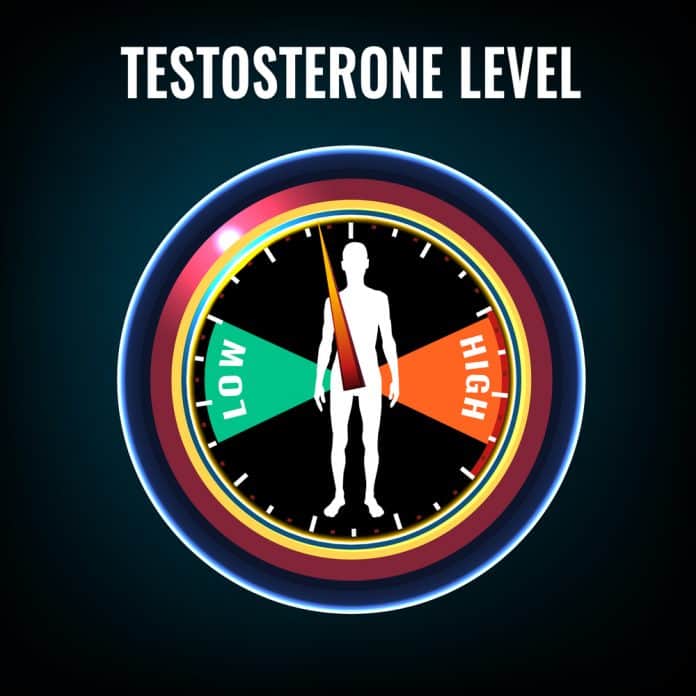
Table of contents
- A brief introduction to testosterone and its properties/benefits
- Serum testosterone assays
- Types of testosterone
- Types of testosterone assays
- How is testosterone measured?
- Wang’s analysis of testosterone assays
- 4 Types Of Testosterone Tests You Can Buy Today
- Why should you test your testosterone levels?
- How to get a testosterone test?
A brief introduction to testosterone and its properties/benefits
Testosterone is the most important male sex hormone and responsible for the correct functioning of multiple body processes.
This anabolic steroid is directly involved in the development of reproductive organs in men as well as the development of secondary male sexual characteristics.
Testosterone plays an important role in the lives of women too.
Inadequate amounts of testosterone can lead to numerous health issues such as low bone density (and susceptibility to fractures), poor sex drive and lack of concentration.
Normal testosterone levels in men are between 300 ng/dL and 1,000 ng/dL. Bodybuilders might have higher testosterone levels as a result of increased muscular mass.
Normal testosterone levels in women are usually between 15 ng/dL and 70 ng/dL. This number varies depending on various factors such as the moment of the day, mood, diet, exercise level and more.
However, certain men might have low levels of testosterone (under 300 ng/dL) and experience various symptoms such as fatigue, lack of sexual desire and the development of male breasts (gynecomastia).
Testosterone replacement therapy might be useful for men who have T levels around 150 ng/dL. This treatment will help to raise the testosterone levels to normal values.
Inadequate amounts of testosterone can also impair muscle development and slow down one’s progress in the gym. Men usually have 40 times more testosterone than women, and it’s important to keep T levels in the normal range to ensure proper muscle growth.
Measuring the testosterone level isn’t an easy task.
That’s because this hormone can be bound to certain proteins in the body and measuring it becomes very difficult when it’s outside the normal ranges.
For example, it’s relatively easy to determine the exact testosterone level of a healthy eugonadal man, but not that easy if he’s hypogonadal and it’s testosterone levels are dangerously low.
To measure low T concentrations in men, women and prepuberty children, more sensitive tests are required.
Scientists and medical professionals have managed to create a couple of reliable measuring methods for testosterone.
These are called testosterone assays.
Serum testosterone assays
According to the dictionary, the word “assay” refers to the testing of a particular material, ore or substance to find out its composing ingredients.
Serum testosterone assay refers to accurately measuring the testosterone levels in the body of a male or female.
Accuracy is important because it directly impacts the diagnosis of a particular disease or health complication.
Endocrinology is the discipline responsible for measuring hormone levels in the body.
It encompasses a wide variety of assays which help the clinician confirm a diagnosis for a patient.
For example, testosterone assays are used to determine if a male patient has hypogonadism or not.
Hypogonadism consists of reduced gonad activity. Men diagnosed with hypogonadism usually have low testosterone levels and experience different symptoms such as low sex drive and gynecomastia (man boobs).
Testosterone assays are also used to determine if certain boys have delayed puberty onset and to diagnose androgen deficiency.
When circulating testosterone levels are very low, the sensitivity of some assays is diminished. That’s why it is necessary to pick the right testosterone assay to accurately determine circulating T levels.
Types of testosterone
The majority of circulating testosterone in the bloodstream is bound to SHBG which is the sex hormone binding globulin. Testosterone can also be weakly bounded to albumin which is a water-soluble protein.
The albumin-bound testosterone combined with free testosterone makes up for approximately 35% of total testosterone levels.
This is also known to be biologically active testosterone.
Hyperthyroidism and other factors which influence SHBG can lead to changes in the amount of biologically active testosterone.
Types of testosterone assays
Measuring the testosterone levels in one’s body is not that easy.
One way to do that is by using Isotope dilution mass spectrometry. This assay measures total testosterone levels.
Laboratories also use direct chemiluminescent immunoassays. However, these assays are less accurate when testosterone concentrations are too low.
Liquid chromatography-tandem MS (mass spectrometry) is also used as well as gas chromatography-MS for more accurate results, particularly when testosterone levels are at the low and high extremes.
Measuring free testosterone is done after it has been separated from the protein-bound forms.
This can be done using equilibrium dialysis or ultracentrifugation.
Equilibrium dialysis is the most common method, and it involves introducing testosterone isotopes into a patient sample.
The free testosterone concentration is estimated based on the distribution of isotopes in the dialysis membrane.
Measuring the bioavailable testosterone can be done using ammonium sulfate which influences the testosterone bound to SHBG.
Assessing the testosterone levels began approximately 30 years ago.
Tests were done on small samples of blood, but their accuracy was somehow limited.
Modern testosterone assays are more sensitive, require a smaller sample of serum and are more affordable. They can be done using nonradioactive methods in reference labs.
How is testosterone measured?
Up to 98% of the testosterone which can be found in the bloodstream is bound to proteins such as albumin and SHBG. Just about 2% is free.
Albumin-bound testosterone and free testosterone are known as bioavailable, and they can easily be used by tissues for androgen action.
On the other hand, total testosterone can be measured using nonradioactive immunoassay and chemiluminescent detection.
These methods offer accurate results if the male patient has testosterone levels in the normal range such as 300-1000 ng/dL.
However, these assays recorded low limits of testosterone of approximately 132 ng/dL which is not normal in healthy men.
Clinicians have wondered why this happens and how they can improve the accuracy of testosterone assays when T concentrations are very low.
When it comes to total testosterone assays, the gold standard is a steroid-free serum interacting with gravimetrically-determined amounts of testosterone.
Independent measuring methods are also used such as liquid or gas chromatography with mass spectrometry.
For women, highly sensitive tests are necessary to determine total and free testosterone levels because women have much lower amounts of testosterone in the bloodstream in comparison with men.
Dr. Wang’s analysis of testosterone assays
In a paper published in 2004, Dr. Wang and her colleagues compared multiple testosterone immunoassays (both manual and automated ones) with liquid chromatography-tandem mass spectrometry.
The results were very accurate for the latter option, and the test was performed on serum samples from patients with different testosterone levels (ranging from under 150 ng/dL to 1,500 ng/dL).
This means that most of the automated and manual assays were accurate when compared with LC-MSMS, but some of the tests provided inaccurate results.
The authors of the paper concluded that most manual and automatic testosterone immunoassays are ideal for differentiating eugonadal men from hypogonadal men, but they weren’t accurate for women or children who haven’t reached puberty yet.
It’s important to notice that these automated and manual testosterone immunoassays are compared with gold standards of adult male reference ranges.
These ranges are set by individual laboratories and are usually monitored by the College of American Pathologists.
That’s why you’ll find several testosterone tests on the market. It’s important to get the right one to obtain the most accurate results.
4 Types Of Testosterone Tests You Can Buy Today
There are four different testosterone assays you can choose from to accurately determine the amount of testosterone in your bloodstream.
#1 – TESTOSTERONE Total and Free (Regular)
This test is ideal for people who have testosterone levels in the normal ranges.
It measures total and free testosterone using direct analog/radioimmunoassay (for free T) and electrochemiluminescence immunoassay (for total T).
On the other hand, if you know you have very low testosterone levels (you have hypogonadism and testosterone levels below 150 ng/dL) or you have very high testosterone levels (you are a bodybuilder with T levels over 1500 ng/dL) then you might want to use the LC/MS test because it’s more accurate.
If your testosterone levels are very high, the test will show above 1500 ng/dL, not the exact number (such as 1,700 or 1,800).
#2 – Testosterone Free and Weakly Bound (Bioavailable Testosterone)
Bioavailable testosterone can be used for steroid-receptor interaction.
This test measures the amount of free testosterone and weakly bound testosterone in the bloodstream.
The test doesn’t look at the testosterone bound to SHBG because this type is biologically inactive as it has a high binding affinity.
On the other hand, weakly bounded testosterone is usually derived from albumin, and it has a low affinity which means that it can quickly dissociate and become available for interaction.
#3 – Testosterone, Free, Equilibrium Ultrafiltration With Total Testosterone, LC/MS- No Upper Limit
This test doesn’t have any upper limit for either type of testosterone such as free, total and bioavailable.
It uses more complex measuring assays such as liquid chromatography-tandem mass spectrometry to accurately determine testosterone levels.
However, this test is more suitable for bodybuilders who are known to have very high testosterone levels.
If you are not into bodybuilding or you think you have below normal testosterone levels then this test is not ideal for you.
There are other tests which are more economical and can be used to determine your testosterone levels more accurately.
If you are on testosterone replacement therapy, you might want to choose a test which has no upper limit on total testosterone and up to 50 ng/dL limit on free testosterone.
An even more affordable test for people on testosterone replacement therapy has an upper limit of 1,500 ng/dL on total testosterone and 50 ng/dL limit on free testosterone.
#4 – TESTOSTERONE, Free and Total, LC/MS Assay (T > 1,500 ng/dL)
If your testosterone levels are very low (both men and women) then this test is ideal for you.
The test looks at testosterone concentrations under 150 ng/dL or above 1500 ng/dL for total testosterone.
The free testosterone is capped at 50 ng/dL for this test, but there are other tests with no upper limits for total and free testosterone if that’s what you’re interested in.
Why should you test your testosterone levels?
Measuring the testosterone levels becomes increasingly popular nowadays, thanks to direct-to-consumer labs which are affordable and easy to use.
Males and females alike can buy one of the tests described above and determine the actual amounts of testosterone in their bloodstream.
But why is this a good idea?
First of all, if you have common testosterone deficiency symptoms such as fatigue or low sex drive then measuring your testosterone levels is highly recommended.
This will help you decide if indeed a lack of testosterone is the problem and whether you should try testosterone replacement therapy or not.
Testosterone tests give you a broader insight when it comes to your hormonal health.
Secondly, if you’re on testosterone replacement therapy already, the results of the test might provide good feedback on your progress.
The clinicians who conduct these tests can give you useful pieces of advice such as how often to take testosterone gels or injections, whether you should reduce or increase the dosage, etc.
If you’re a bodybuilder, keeping your testosterone levels in check also helps you monitor your progress.
After all, testosterone is vital for muscle development, and if you have sufficient amounts of it, you’ll ensure muscle growth in the long run.
Testosterone is important for women too. This hormone is linked to mental alertness, good mood and increased sex drive.
Testosterone deficiency in women can also lead to low productivity at work and poor physical performance while in the gym.
Numerous advancements in the medical field coupled with improved testing devices make measuring testosterone levels a more affordable and accurate process.
How to get a testosterone test?
Visit Discounted Labs , pick your favorite testosterone assay, and you’ll be able to get your results in a few business days.
You can also order other blood tests to check your glucose levels, cholesterol, triglycerides, blood count and more!
Low Testosterone Causes and Benefits of Treatment
VIDEO TRANSCRIPT:
The causes of hypogonadism could be chronic liver disease, COPD, sleep apnea, renal disease, use of different drugs, like I said before: glucocorticoids, opiates, ketoconazole, which is an antifungal. Anabolic steroids can actually shut down testosterone production. HIV, hypertension, lipids, infertility, obesity, sleep apnea, arthritis, diabetes, and other conditions. I’ll explain later what that means. Genetic mutations, and there are some genetic mutations that can affect sexual development in boys. As I said before, environmental factors: metabolic syndrome, illnesses, aging, other hormone deficiencies. Thyroid is one of them, very connected to testosterone production. Nutrient deficiencies, as I said before, lifestyle issues, medications.
This is actually a slide that I got from SpectraCell, a very good company in Houston that tests micronutrient levels in lymphocytes, not in actual blood, but in lymphocytes which is supposed to be more precise. This graph doesn’t say that adding these vitamins actually improves testosterone blood levels. They may do so, only if you have a deficiency. Zinc, definitely good data. Magnesium, vitamin E, vitamin K, vitamin D, vitamin B6, and folate. If you do supplement, and you have no deficiencies, you will not see improvements in testosterone. That’s as simple as that.
The benefits of testosterone therapy. This is probably now evidenced from all the other slides that I’ve covered: improved continuity of function, mood, libido, stamina, believe it or not, improved cardiovascular health. Actually, men with lots of testosterone tend to die of heart disease faster than men with normal testosterone. There’s obviously controversial data right now that has been discussed a lot in the past three years on the use of higher doses and poorly managed testosterone therapy that has been associated with increased cardiovascular risk. Improvements in body composition, glucose control, fertility. When you improve testosterone, you can improve fertility to a certain point, and then you may have a decreased infertility depending on different factors. Exercise, functional capacity improves, and there’s some studies, not too many, very small data set, that may suggest that improved longevity and survival.
How long does it take to see benefits? That’s another one of those questions that we get a lot on Excel Male. Obviously, it’s hard to predict. Everybody’s different, depends your age, depends on morbidities, if you have diabetes, if you have high blood pressure, if you’re 29 compared to a 65-year-old. Obviously, there are different conditions and different factors that are involved in the efficacy of testosterone. You see here the different colors. The blue lines say maximum benefits are reached, and on the bottom you see weeks. The darker green is upper, and the lighter green is lower duration when benefits are reached.
Inflammation decreases. Testosterone replacement decreases inflammation very fast, within three to 12 weeks. Blood sugar control, anywhere from 12 weeks on the lower side to 52 weeks. Bone mineral density takes a long time because obviously bone is a lot harder to build. It’s a very slow process. Body composition up to 52 weeks. Depressive mood could be anywhere from as fast as three weeks to as low as 30 weeks. Quality of life could be also you can see benefits within a few weeks. That’s usually what happens. The men tend to feel really well, really good, the first month. Then it tends to plateau, and they get very discouraged after a while, but in most men, like me, therapy [inaudible 00:05:18] forever. We wake up to the fact that it’s actually improving our quality of life. If we ever run out of testosterone or we stop for any reason, out of our control, that’s when really we’re awakened to the fact that our quality of life, we have reached a new normal that we forget about.
Erections and ejaculations, that is difficult to assess. Some men do experience better erections, especially morning time erections, and some men don’t. It also depends on age and different factors, that we really don’t know all the factors involved. Sexual interest is probably the factor that improves the fastest and the most obvious, within three to six weeks. There’s more interest in sex or more attraction to potential sexual partners. There’s more interest in general to approach or proceed to have sex or masturbate. That’s one of the first in terms that if it’s not improved, there’s definitely something going on that your doctor needs to look at.
More information: https://www.testosteronewisdom.com/4196/testosterone-replacement-therapy-latest-research/
Low Testosterone Blood Level: How Low is Too Low?
VIDEO TRANSCRIPT:
Hormones change as we age. As you can tell, these are different hormones: estrogen, thyroid, progesterone, insulin, testosterone, cortisol, growth hormone, and this is not only male related but also females. Most hormones, as you can tell, go down with age, except insulin and cortisol. Insulin, we become more and more insulin resistant, and our cortisol, which is an inflammatory hormone and stress hormone also increases. Those two trends of increasing insulin and cortisol also make us gain more weight, more fat, get more inflammation and more chronic illness that are related to aging.
Today, I’m only going to focus on one of them, testosterone. Eventually, I will have a lecture on each one of these hormones for you guys to watch, so stay tuned.
Next one. So, testosterone, the target organs. Testosterone is an androgenic hormone. The world, when you say testosterone, equates a hormone to males and the fact is that not only men have it but also women. Women have it at a tenth of a concentration that men have in your bloodstream, but the target organs are pretty much common except obviously for the penile organ. When it comes to the effects of testosterone, it has effects on hair growth, balding, sebum production that sometimes causes acne, liver actually, it improves, promotes, the synthesis of proteins in the liver. When it comes to male sexual organs, it’s responsible for penile growth, spermatogenesis, which is the production of sperm, prostate growth, and function. In the brain, it affects libido and mood. In the muscle, it increases strength and muscle volume. In the kidneys, it stimulates the production, I’m sorry, there is a misspelling there, stimulates the production of red blood cells. In the bone marrow, it stimulates of stem cells. In bone, it accelerates the linear growth in growing boys and girls. It is also obviously associated with bone density.
What are the effects of having low testosterone? I’ll go through different slides and coming up on explaining what low testosterone means and the ranges, et cetera. But one of the effects is sexual dysfunction or lack of interest in sex, some erectile dysfunction, decrease of sense of well being, increase irritation or moodiness, decrease red blood cells to the point that somebody can become anemic, decrease bone marrow density, decrease lean body mass, muscle strength and increase in fat mass. As you can tell, all of them could be associated with aging, but the fact is that normalizing testosterone blood levels can reverse most of these effects.
This is where most of the controversy and discussion occurs, even in 2018, when it comes to defining what’s normal testosterone, where are the normal ranges. Believe it or not, it not only depends on the guidelines, committees and medical groups but also on the different lab companies, like Lap Core and Quest and other lab companies have different ranges. They gather that data from their database on the spread of testosterone and in men that are using, and women, that use their companies.
In general, it’s probably safe to say that the total testosterone, and I’ll explain what that means, total and free testosterone just coming up, they range anywhere from 350 to 1100 in men and from 10 to 50 nanograms per deciliter for women. By the way, this nanograms per liter for people watching the webinar from outside the United States, the units are different. I usually talk about micromoles per liter or other units like that. So, I apologize for that. But these are units used in the States.
The symptoms of low testosterone, as I said, fatigue, low or lack of sex drive, poor appetite, loss of muscle mass and strength, depression and others.
The effect of age on testosterone. Age-related decline begins around 30 to 40 years of age, and approximately 1.2% of testosterone is lost every year, and obviously, that loss can be accelerated by different factors that I’ll be covering soon. The average testosterone of men 75 years of age compared to a younger man of 25 years of age total is about 35% in bioavailable. I’ll speak about what bioavailable means, is 50%.
However, many men in the seventh or eighth decade have normal testosterone levels. So, this is not 100% of rule for everybody. Some men are healthy enough or lucky enough not to have testosterone deficiency when they’re older. Excuse me.
Also, something that we forget sometimes is that the circadian rhythm actually promotes the production of most hormones at night, and the testosterone peaks early in the morning, around 4:00 to 6:00 AM, and it peaks both in older men and younger men. As you can in this graph, the younger men have higher levels and higher peak. The effects are blunted by age. So, you can tell in the older men, there is not as much of a peak and is more of a constant blood level throughout the day, and that happens in most aging men.
What is the testosterone level defined as low? This is another point of controversy and discussion. I don’t think we’re ever going to have groups, medical groups agree, although we’re getting closer as you can tell on this table, but these are different medical groups, European Academy of Urology, the European Association of Urology, International Society of [inaudible 00:08:25], the International Society for the Study of the Aging Male, and the Endocrine Society. The first three agree, and that was the guidelines of 2009 that anything under 350 nanograms per deciliter or for guys outside the United States is 12.1 nanomoles per liter, and free testosterone less than 65 picograms per milliliters.
The TES, which is an endocrine society, I think they just posted new guidelines, but it’s more or less the same value, 300. The disagreement here, too. On the Europeans 350 and believe it or not, there is a group of experts that got together in 2014, it’s the high prescribers, doctors have a lot of experience that agreed that anything under 400 nanograms is considered low.
There’s no agreement. Insurance companies vary, too, when it comes to approval of testosterone therapies. Most of them are going now by 300 to 350. You also have to have the symptoms and the lab test that proves that. For clinics that do not take insurance, cash-based clinics, they tend to be a little bit more flexible when it comes to testosterone blood levels, up to 500 nanograms if you have symptoms of low testosterone. It depends obviously whether or not you’re going to be getting products that are paid by your insurance company or if you’re going to be using, or instance, a compounding pharmacy. I’ll be explaining what compounding pharmacies do and what different changes in the industry are as we speak.
I also reviewed a few studies. I didn’t write the references here because there are too many, but you can go to excelmale.com. I have this information and references. But these are different studies that have linked different levels of testosterone and risks of different pathologies or diseases or issues or health issues. Less than 450, the study linked that to a risk of the increased metabolic syndrome, which is an increase in fat mass, waist circumstance, low HDL, hydro glycerides, et cetera.
Less than 400 in another study linked to venous leakage, which is internal penile damage that affects erectile function. Less than 350, a study linked that to increased death risk and anemia risk. Less than 300, lower libido, weight gain, and diabetes risk increased. Less than 300 increase risk of fractures, memory related issues and depression, risk increases. Less than 250 in another study, increase arterial plaque and decreased sleep quality. Less than 235 in another study, hardening of the arteries and less than 200, a decrease in morning erections. Less than 150, increase inflammation.
As you can tell, 300 or so, 350, 300, it’s kind of a midpoint in all this data. It makes sense so far. What the guidelines have been saying is not far off from what studies are showing when it comes to increased risks of different health issues.



